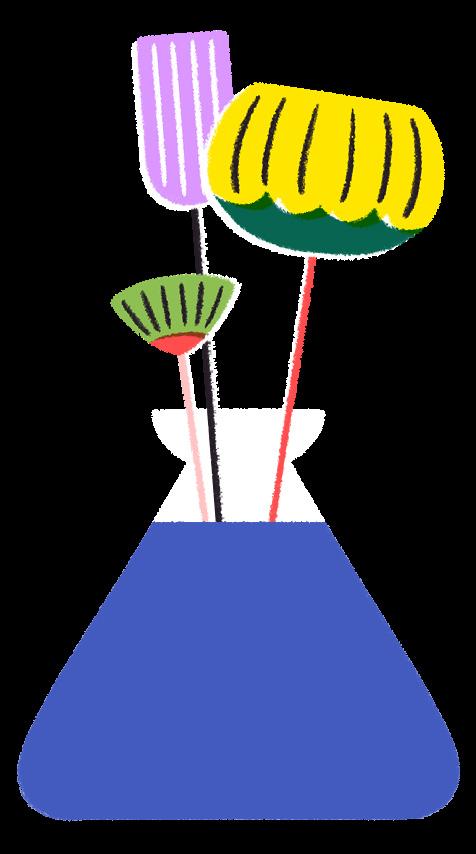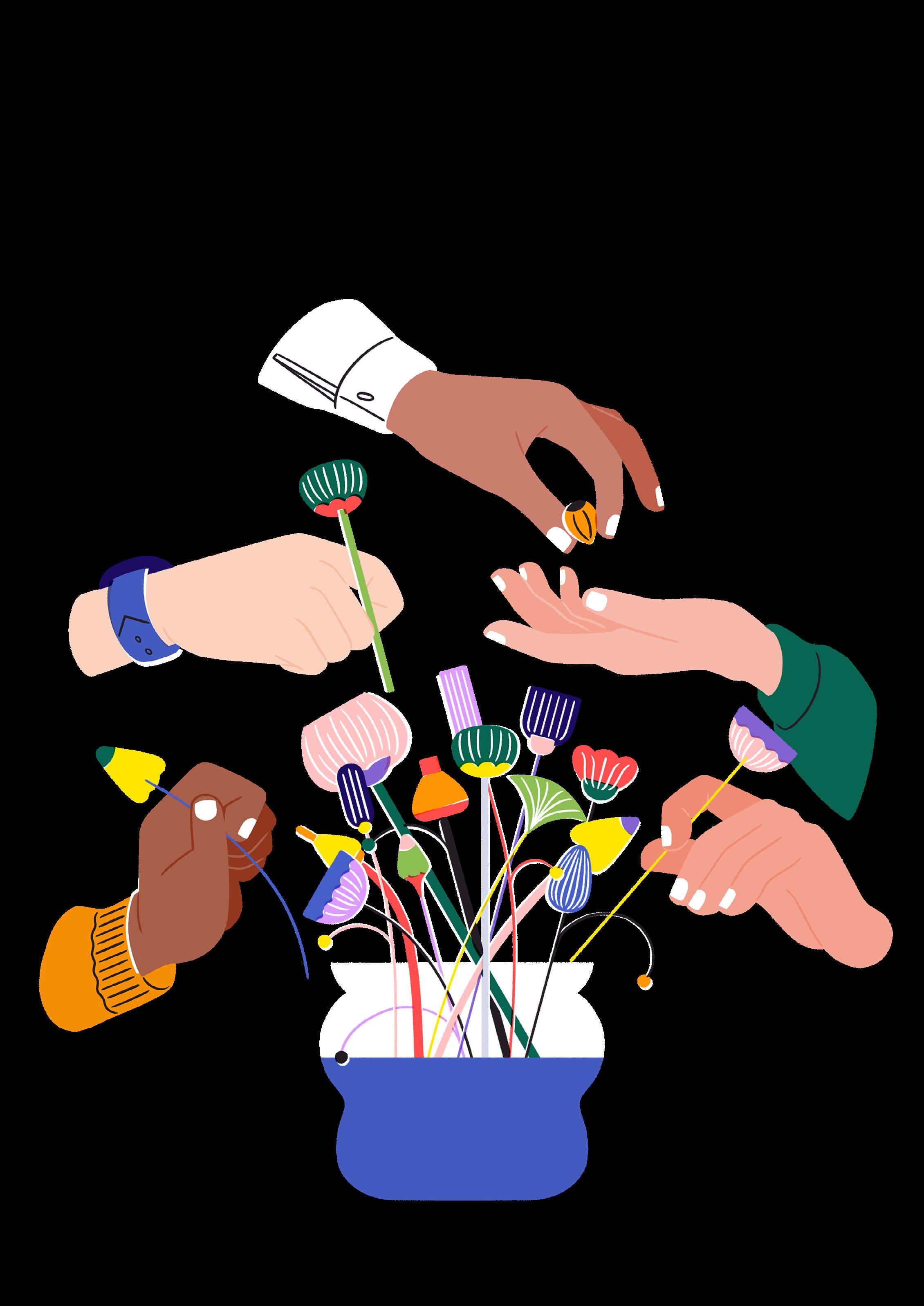

Conversations about Care, Capabilities and Confidence
Foreword
Mdm Ang Hwee Loo
Forging Ahead Together: How Might Schools Support and Empower Teachers?
Mdm Victoria Loy
Debunking 6 Myths About Self-care
Mdm Victoria Loy
The Answer is in the Room
Ms Zhang Xuedi
Mrs Rachel Tay
Mdm Nur Azimah Binte Mohd Jailani
Ms Yeo Bi Xia
Mdm Sim Siok Siok
About the Cover
The cover image depicts a vase with blossoming and budding flowers stylised to look like paint brushes and drawing materials. This represents the wealth of experience and capabilities in the fraternity. Hands exchanging the seeds, adding and taking flowers from the vase signify how the fraternity can simultaneously care for and be supported by each other.
Euphoria: Appreciation Without Borders
Mr Mak Yew Chong
Mrs Clara Chua Phin Phin
Mdm Ang Hui Min Pauline
Ms Ler Jia Yi
Ms Er Kia Hui
Creating “Magic” through our Aesthetics Diversity
Mr Victor Gan
22 Words for 2022
Ms Yeo Hui Qi
Mr Muhammad Razali bin Puasa
Ms Cheryl Tan
Mdm Leow Siew Peng
Mdm Corinne Lee
Ms Sim Kim Hong
STAR-Post (Art), January 2022
All rights reserved. No part of this publication may be reproduced in whole or part without the prior consent of STAR.
Foreword
Mdm Ang Hwee Loo Deputy Director (Art), STAR
In 2021, Education Minister Chan acknowledged the increase in teachers’ workload and the need to ensure better support for teachers. At the MOE Workplan Seminar 2021, he reiterated the importance of building a community that cares for the fraternity (Care), of practising lifelong learning through work attachments and building new connections (Capabilities), and of learning from others with confidence to chart our own way (Confidence).
This issue of STAR Post centres on those 3 ideas as we look forward to thriving through these extraordinary circumstances. ‘22 words for 2022’ zestfully sums up tips and ideas to cherish and practice for 2022. For the “why” and “how” of schools supporting teachers’ psychological needs, read Victoria Loy’s article ‘Forging Ahead Together’. Her listicle ‘Debunking 6 Myths About Self-care’ provides clarity on authentic and sustainable self-care.
We can look at examples of how a school’s aesthetics teachers have collaborated annually in Victor Gan’s sharing in ‘Creating “Magic” through Aesthetics Diversity’. The interview with the West 7 Cluster Schools’ Networked Learning Community (NLC) in ‘Euphoria: Appreciation Without Borders’ shows this spirit at the cluster level. Last but not least, ‘The Answer is in the Room’, delights us with anecdotes of learning from the various NLCs helmed by STAR.
Let’s continue to support each other and be supported as a fraternity. Wishing all a happy and fulfilling 2022!
Forging Ahead Together: How Might Schools Support and Empower Teachers?
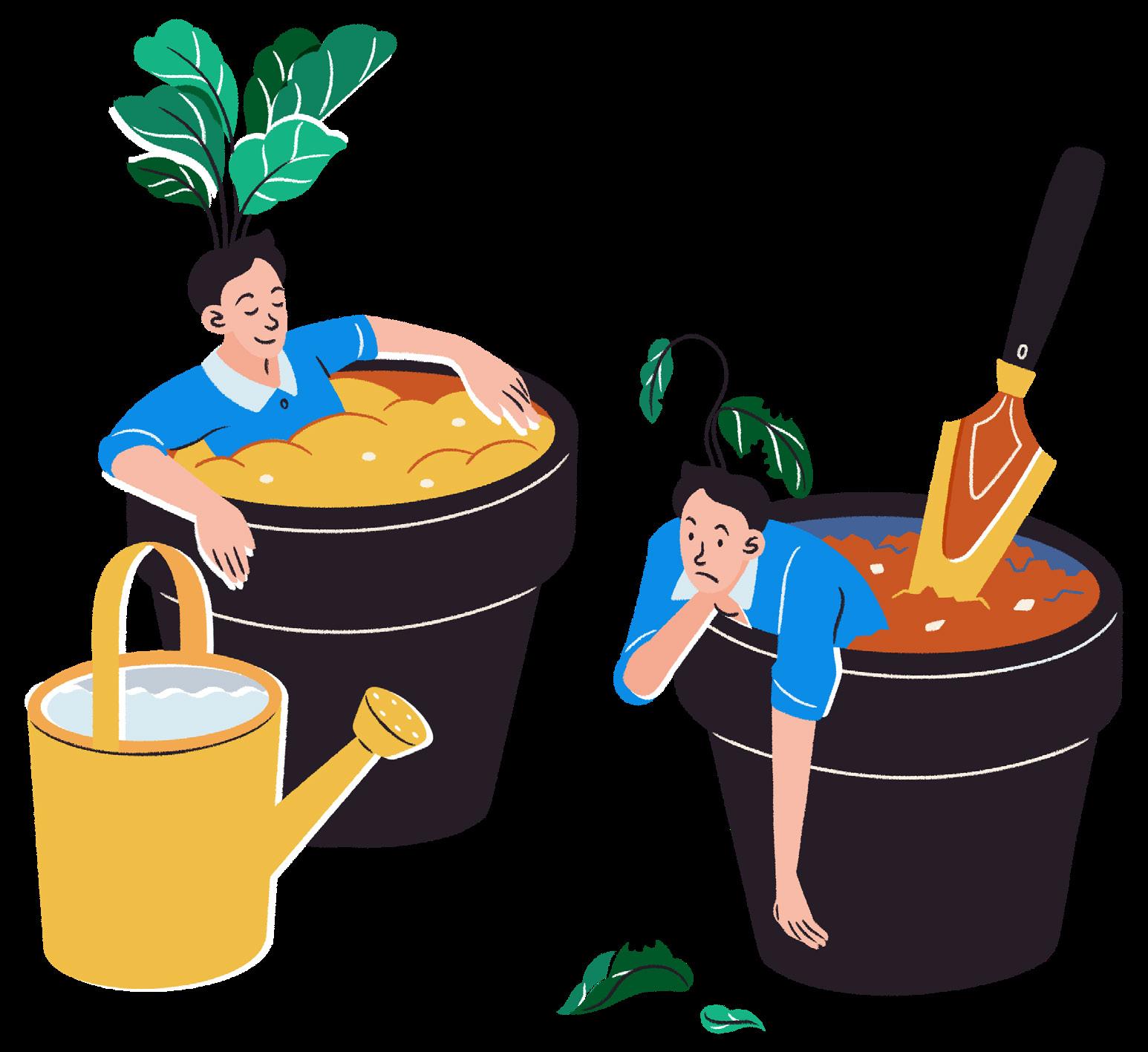
A recent nationwide survey has spotlighted the negative impact on teachers’ mental health amid the pandemic. With the continuous spread of the Covid virus at a slow-burn pace, what we previously used to describe as the VUCA (Volatile, Uncertain, Complex, Ambiguous) world has transited into what the anthropologist, historian, and futurologist, Jamais Cascio named as a BANI (Brittle, Anxiety, Non-Linearity, Incomprehensible) world. As teachers juggle a multitude of different tasks and demands ranging from the rapid switch to home-based learning during last year’s circuit breaker, to the demanding
Mdm Victoria Loy Master Teacher (Art), STAR
adaptation to hybrid and blended learning to daily routines needed for enforcing safe management measures on top of the normal teaching duties, every teacher must be given the right practical and emotional support so that we can, in turn, support our students well.
In MOE Schools Workplan Seminar (WPS) 2021: “Enabling our fraternity”, Minister Chan reminded educators to focus on the 3Cs: Care, Capabilities and Confidence, beginning with genuine Care. He emphasized the importance of providing care and better support to our fraternity to build a system and community that cares for the fraternity. WPS was a great start for school leaders, key personnel, and HQ personnel to have honest, heartfelt, generative conversations on ways MOE could help in providing better support for teachers. At STAR, art teachers’ well-being is important to us. We would like to start this year’s STAR Post by sharing how schools and teachers can take practical actions to promote mental wellness for teachers. Readers may also like to read the next article, which will delve into self-care for teachers.
According to Abraham Maslow’s Hierarchy of Needs, the five categories of human needs dictate each individual’s behavior. Physiological needs form our basic needs, we also have safety needs, love and belonging needs, esteem needs, and self-actualization needs.
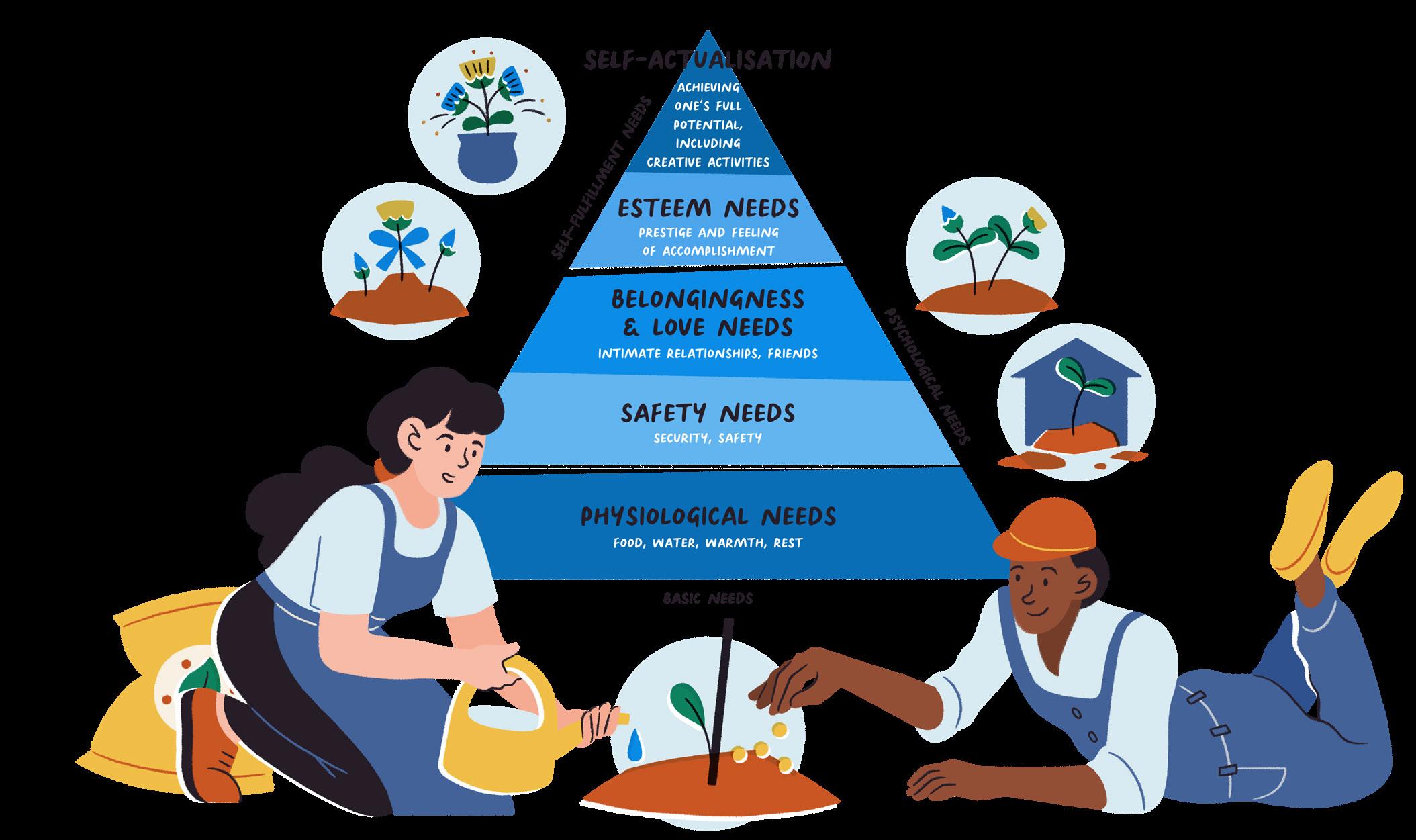
In positive psychology, well-being is amongst concepts such as happiness, satisfaction with life, finding meaning, and flourishing that humans employ for a full and rich life. We cannot ignore how the pandemic exacerbates our stress level by threatening the provision of our needs at the most basic level. For example, we have to be agile and flexible to changing situations, but working in fluctuations for a prolonged period deprives us of security and stability. We also have been working hard to use alternative means of teaching and collaborating and this drains our energy faster than we can rest and recover. We must recognize where our needs are unfulfilled and how we can support our own and each other’s needs at all levels.
In the previous issue of STAR Post, MTT Wee San shared with us about how teachers can become more autonomy-supportive towards students, referencing Deci and Ryan’s Self Determination Theory (SDT) in her article titled ‘Motivating Students to Learn ↗’. Likewise, teachers also share these basic psychological needs for autonomy, competence, and relatedness. Let us explore how SDT can inform how schools can support and empower teachers.
Needs for Autonomy
The desire to feel one has control, to choose tasks and activities that align with one’s interests and preferences.
Needs for Competence
The desire to feel competent, the desire to understand ‘how to do’ and have control over desired outcomes.
Source: STP Knowledge Bases Chapter 7
Needs for Relatedness
The desire to feel socially connected to others and experience warm and genuine social relationships.
Needs for Autonomy
To promote teachers’ autonomy, schools could consider teachers’ passions and interests during deployment, as well as their choice and voice in their Professional Development and Learning needs.
Schools could also support teachers’ self-initiated projects (individual or collaborative) by adopting a bottom-up instead of a top-down approach. Schools could plan and support teachers embarking on the MOE Teacher Work Attachment Plus (TWA+), exploring different possibilities and broadening their work experience.
Needs for Competence
To develop their sense of competence, teachers are encouraged to experiment and take up appropriately challenging tasks. Engaging in learning (face to face, online, or hybrid), on-the-go mobile learning, or attending Professional Development sessions helps teachers feel more equipped and confident about their abilities to teach well, achieve their goals, and feel fulfilled. Schools could explore providing protected time and funding for teachers to attend self-paced e-learning such as the available MLUs in OPAL2.0, or available online learning platforms such as Domestika for art teachers who like to hone their artistic skills. Such personalized, self-paced, and a not “one-size-fits-all” method would encourage greater ownership of learning, enhance intrinsic motivation and reignite teachers’ passion for teaching and learning.
To build teachers’ confidence and appetite to take risks with new and creative ways of teaching, schools and leaders could encourage teamwork, promote collaborative efforts and highlight their innovations and discoveries. To encourage teachers to be creative, innovative, and “daring to take risks” in trying out new ways of teaching, it is also important for schools to suspend judgment, allow failures, encourage experimentation and celebrate small successes and progress along the way.
Needs for Relatedness
To establish a sense of relatedness, teachers could be encouraged to engage in collaborative learning experiences such as participating in Networked Learning Communities (NLCs), Professional Development courses, art jamming sessions, or self-initiated art projects. These experiences create opportunities for social interactions and help foster meaningful peer relationships within the fraternity. Readers may like to sample examples of these shared by our teacher-writers in this issue of STAR Post. A simple way to connect with the fraternity of art educators is by joining the a|edge Facebook group ↗, or the SgLDC (Singapore Learning Designers’ Circle) Facebook group ↗, or follow STAR (Art) on Instagram (@sgartstories ↗). Another aspect of relatedness which is very often neglected is the sense of relatedness to the self, facilitated through self-care, and is discussed in the next article.

We are here to COMPLETE one another! Illustrated by Wendy Wong, Welenia Studios
Understanding teachers’ motivational needs will allow schools to better forge ahead with clarity of purpose, foster team camaraderie and build a culture of care and excellence. Keeping focus and having clarity on the core mission and vision in education would help all of us better prepare for the future of work, define the future of education needed ahead collectively, and inspire hope for our teachers and students.
References
Hertelendy, A. J., COVID-19 Special Issue Editor, McNulty, E. J., & Burkle, F. M. (2021). The new normal: A catalyst for leadership adaptation in a tumultuous world - Let’s stop applying 20thcentury solutions to 21st-century problems in emergency management. Journal of emergency management (Weston, Mass.), 19(4), 323–325.
Maslow, A. H. (1954). Motivation and personality. New York: Harper & Row.
Ryan, R. M., & Deci, E. L. (2000). Self-determination theory and the facilitation of intrinsic motivation, social development, and well-being. American Psychologist, 55, 68–78.
Debunking 6 Myths About Self-care
Mdm Victoria Loy Master Teacher (Art), STAR
Self-care is the art of taking care of oneself. However, there are many misconceptions about what it entails. For us to promote self-care for teachers, it would be necessary for us to first address some of the misconceptions teachers might have.
Myth 1
Self-care is about indulging oneself and feeling good.
Self-care preserves our holistic health by meeting fundamental needs.
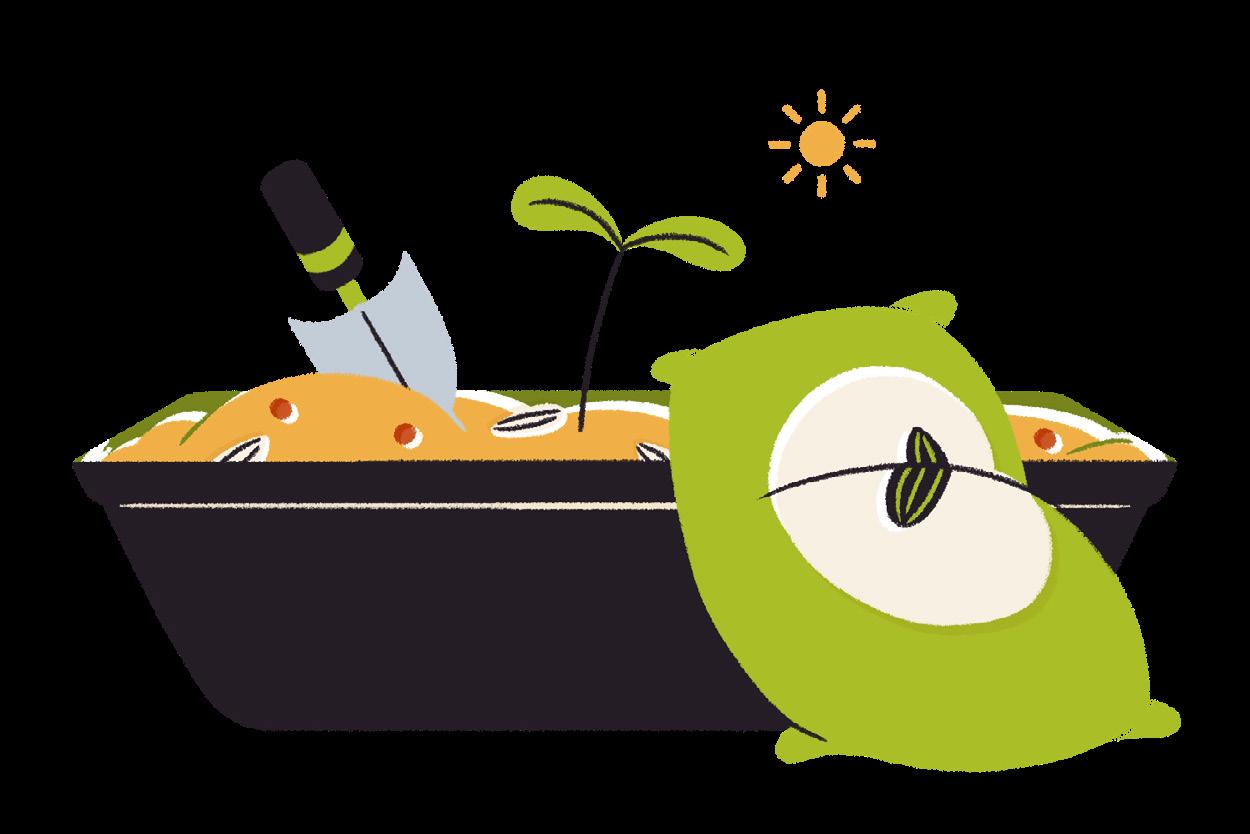
For teachers, self-care is so much more than having a sumptuous breakfast or treating ourselves to a spa day. It is about taking care of our holistic health and well-being, and it is in the best interest of everyone in our classroom. Our holistic health includes our S.P.I.C.E.S.
(Spiritual, Physical, Intellectual, Creative, Emotional, Social) well-being.
It is about finding balance in this overstimulated and overwhelming world, sorting one’s priorities, and ensuring that one’s basic psychological and physiological needs are fulfilled.
Myth 2
Self-care is selfish and self-centered. Truth
Self-care is not selfish. You cannot serve from an empty vessel.
— Eleanor Brownn
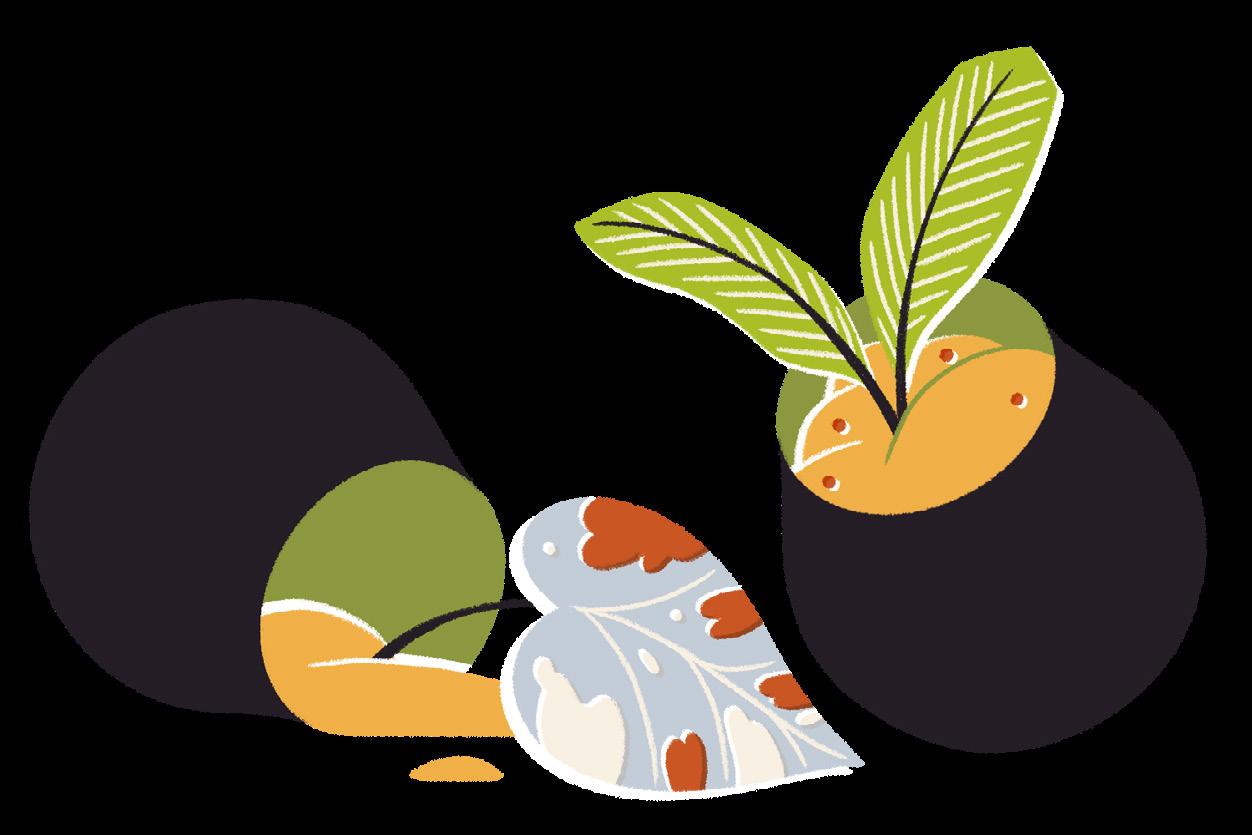
It is not difficult to find art teachers who are extremely passionate, dedicated, and committed to teaching and their students. We know of many art teachers who have gone the extra mile to provide the best support for their students. Sometimes these well-meaning actions are at the expense of their health, wellbeing, and family.
Sufficient rest, exercise, and other modes of self-care allow us to pause, recollect, and
Myth 3
Self-care is a waste of precious time.
recharge. Teaching, though rewarding, can be a challenging profession that can sometimes lead to teachers’ burnout if we are not careful. Self-care is an important way to help us avoid hitting that impasse. Self-care ultimately leads to better health and well-being for ourselves, which in turn enables us to be in the best state for others.
Truth
Self-care is time spent to gain time.
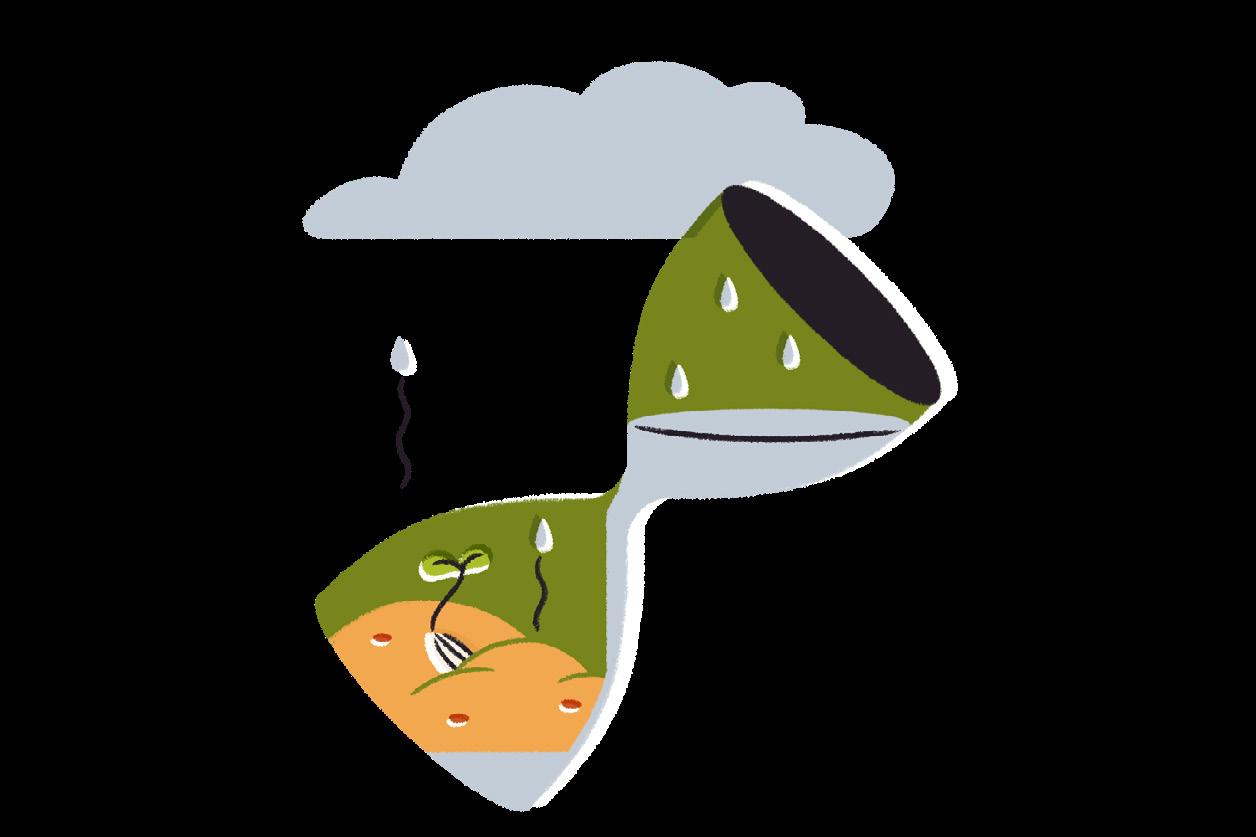
According to Dr. Russel Thackeray, a clinical psychologist, people who practice self-care/ mindfulness have better cognitive abilities with better focus and concentration.
Practicing mindfulness is a common bedrock for self-care. Mindfulness fulfills core socialemotional needs of self-awareness and selfregulation. Learning to recognize our thoughts, emotions, and actions, as well as how to react appropriately are important skills for everyone. When we invest time integrating self-care into
our daily routine, we will notice a newfound sense of clarity and confidence. This translates to renewed purpose and energy in our day.
Myth 4
Self-care takes place only when I have time on the weekends and during school holidays.
Truth
Self-care is an ongoing process. Take your time and find a routine.
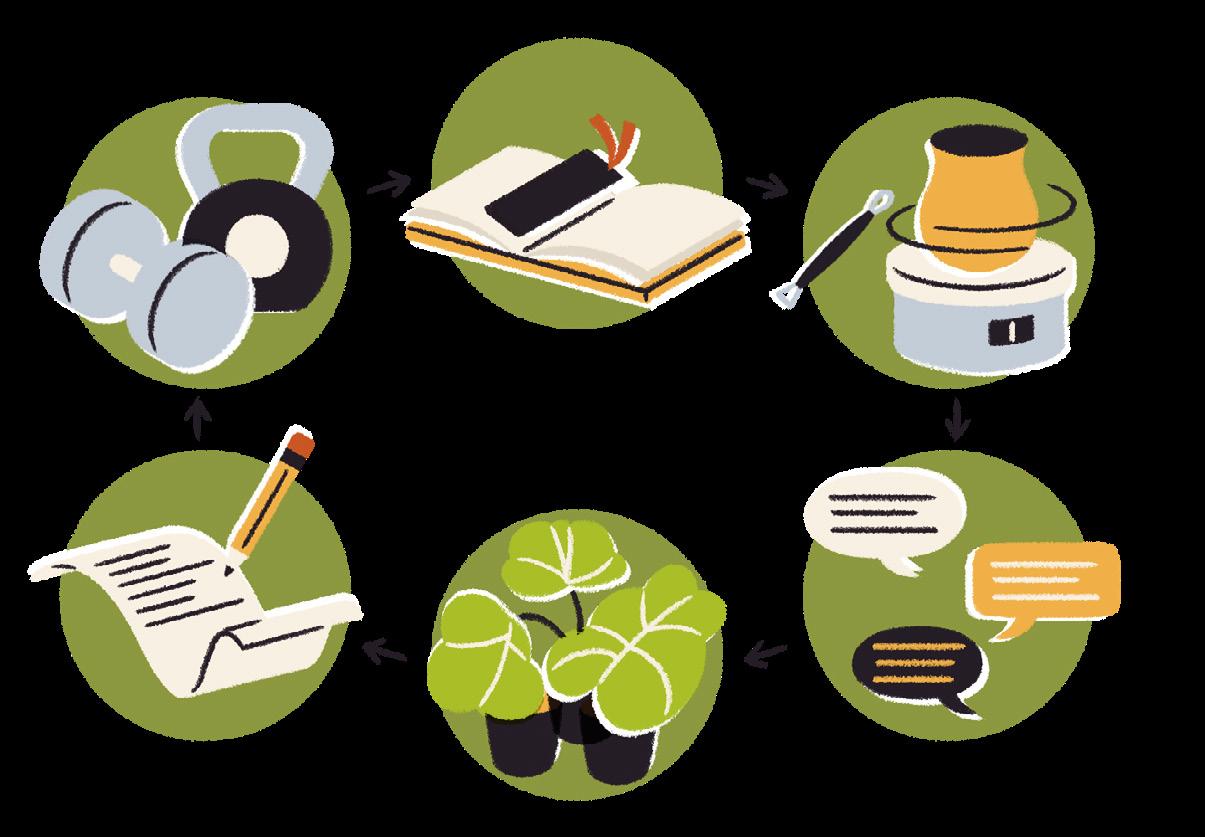
A once-off activity can never be enough to sustain anyone. We can experiment with what simple actions recharge and refresh us, and figure out how often we would like to build it into our daily, weekly, and monthly routine.
For some, a regular self-care routine could be in the form of blocking time out for
⚫ Spiritual self-care: A quiet time for reflection/gratitude journaling
⚫ Physical self-care: An exercise session/ taking screen-off breaks between work
⚫ Intellectual self-care: Reading a good book
⚫ Creative self-care: Creative expressions through any form of arts
Myth 5
Self-care is onesize-fits-all.
⚫ Emotional self-care: Sharing your thoughts with a trusted friend/setting boundaries
⚫ Social self-care: Quality time with your family/friends
Which of these SPICES need to be a bigger part of your self-care?
Planning and sticking to self-care routines forces us to take on positive behaviors that promote a healthy habit and lifestyle. The ultimate goal is to make self-care a way of being and living that lays the foundation of your day rather than another thing on your to-do-list.
Truth
Self-care looks different for everyone and that’s okay.
— Hancock Health
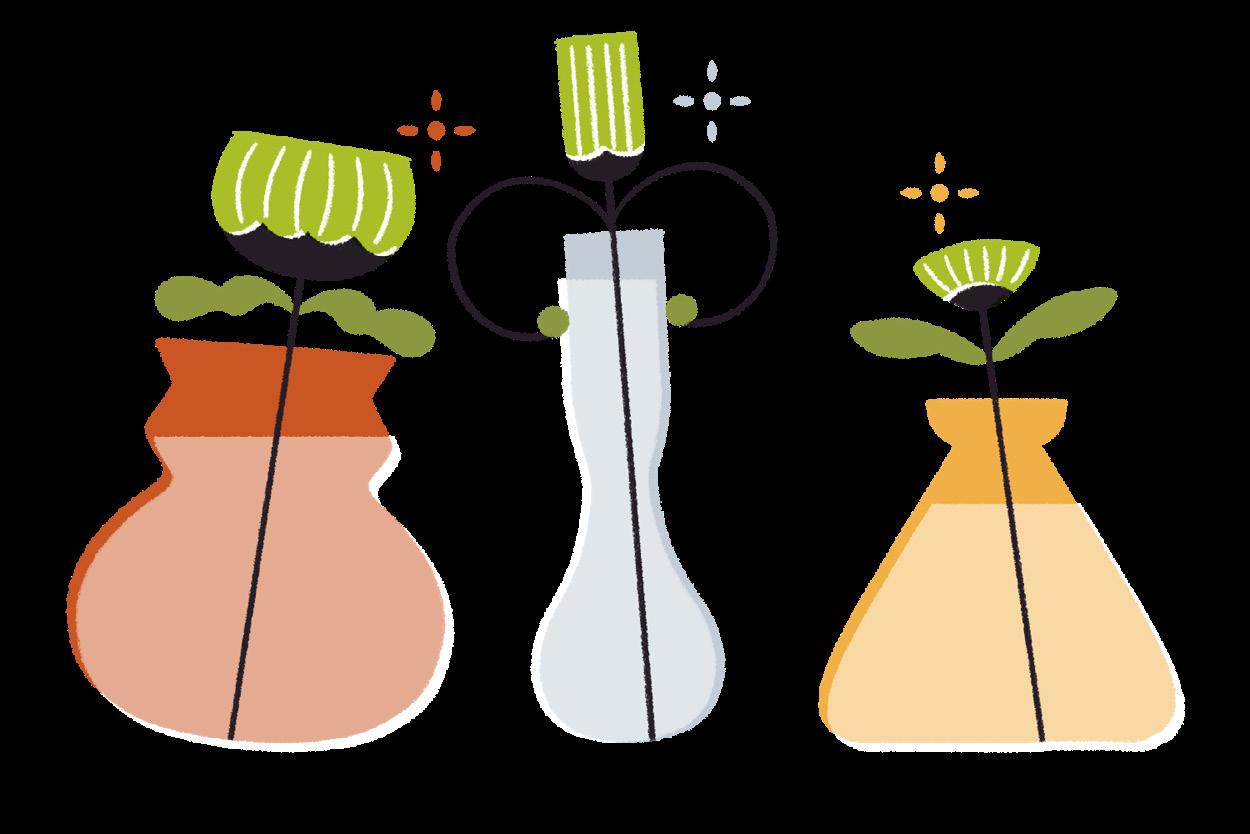
In some organisations, in the effort of promoting “self-care”, every member is made to attend a one-size-fits-all activity. Though the intent of the organisers is good, this might reap
Myth 6
Self-care can solve my problems.
the opposite effect of becoming a burden if we are not careful.
Each of us must decide what the right or best self-care activity is for ourselves. Just like how we advocate for differentiation to cater to the various learning needs of our students, we need to also differentiate and provide choices when it comes to self-care. Everyone’s self-care ways and routines are different and it all boils down to taking time to know yourself. What works best for you?
Truth
Self-care is not a cure, but it nourishes and re-centers the person.
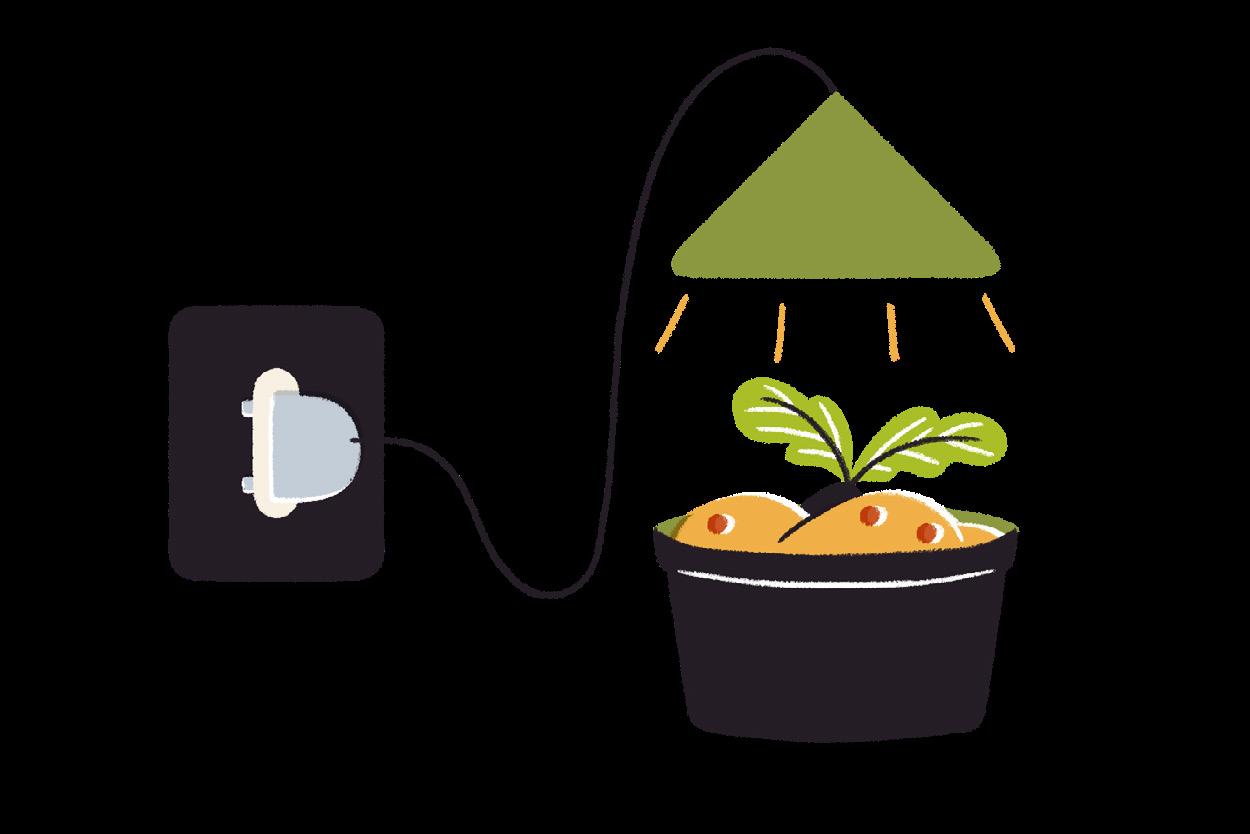
There is no quick fix. However, like teaching where we need an arsenal of good practices to be employed with consistency, pauses for selfassessment, and perseverance over a period of time to see an impact, we should also see self-care as an arsenal of good practices for ourselves, with benefits in the short and long term.
When self-care is practiced correctly, we restore our energy and re-center ourselves. This would enable us to show up more fully each day for ourselves and all those around us. It may not solve our problems but it certainly can lend us a better perspective to tackle them!
You may like to check out MOE’s mindline www.bit.ly/moeatwork ↗, a safe space for free mental health awareness resources and daily tools to support your emotional health in Singapore.
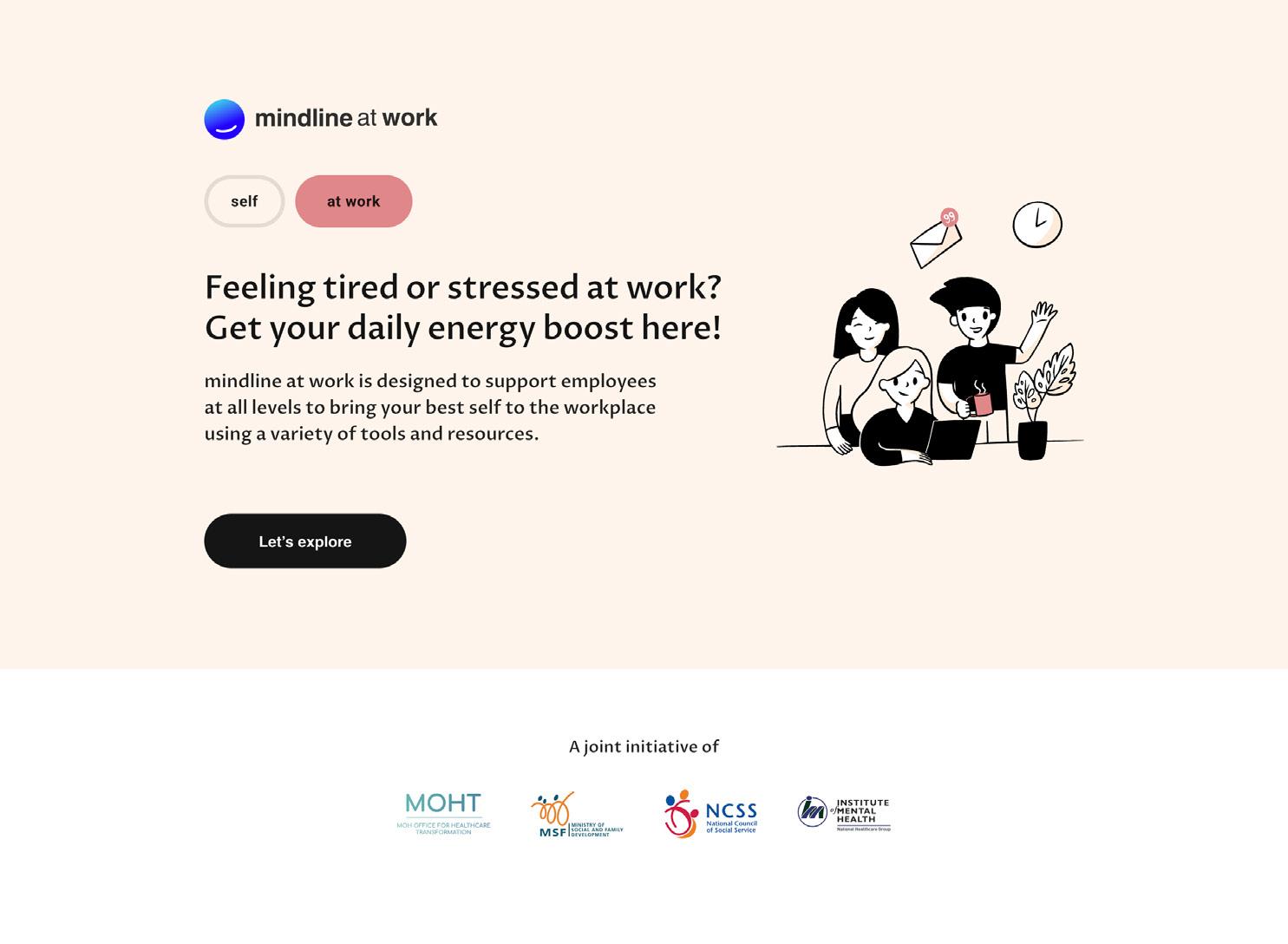
References
Christopher T. McCaw (2020) Mindfulness ‘thick’ and ‘thin’— a critical review of the uses of mindfulness in education, Oxford Review of Education, 46:2, 257-278
Kay, L. (2020). Therapeutic Approaches to Art Education. Worcester, MA: Davis Publications.
Khng, K. H. (2018). Mindfulness in education: The case of Singapore. Learning: Research and Practice, 4(1), 52-65.
Malchiodi, C. A. (2007). The art therapy sourcebook. New York: McGraw-Hill.
The Answer is in the Room
Learning with STAR’s Art Networked Learning Communities (NLCs)
Ms Zhang Xuedi Art Teacher, Chua Chu Kang Secondary School
Mdm Nur Azimah Binte Mohd Jailani Art Teacher, Ahmad Ibrahim Primary School
Mrs Rachel Tay Subject Head Aesthetics, Rivervale Primary School
Mdm Sim Siok Siok Senior Teacher (Art), Boon Lay Secondary School
Ms Yeo Bi Xia Art teacher, Cedar Girls’ Secondary School
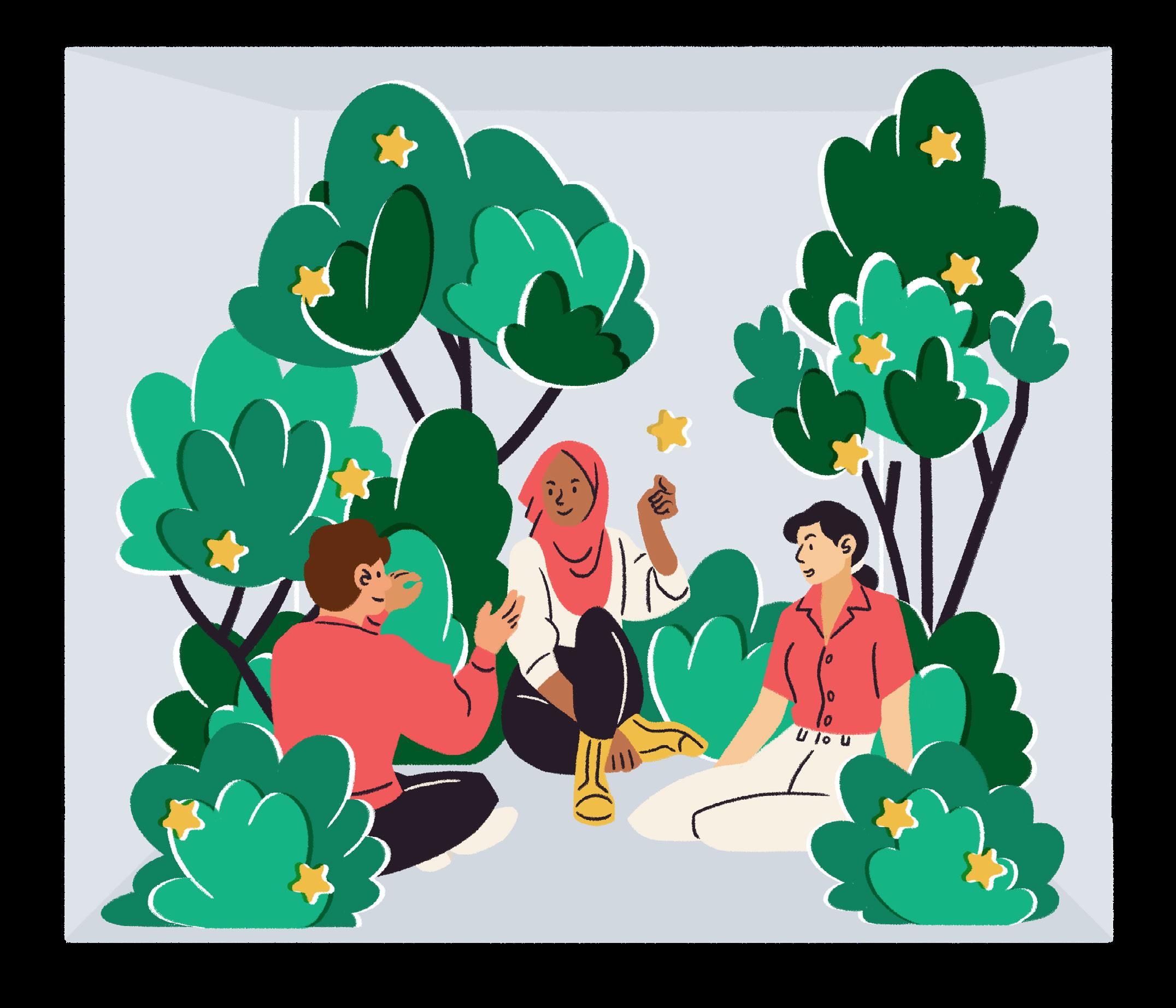
In Alan Blankstein’s book titled “The Answer is in the Room” he proposes from his research that “somewhere within the school or district, there is great teaching and excellent practice underway. The challenge has always been in spreading or scaling that excellence to make it the norm” (p.xii). He encourages educators to come together and leverage the knowledge, skills and strengths of each other to improve classroom practices for the betterment of our children’s future, as their future is “our collective future” (p.xiii).
At STAR, we often mention the phrase ‘the answer is in the room’ to point teachers to the collective wealth of experience and expertise within the community of art teachers in programmes and courses. Every teacherparticipant value-adds to the group as they present and discuss ideas, give and receive feedback, and the instructor/facilitator is not the single point of knowledge.
It is with this intention of collaborative and co-designed learning with teachers that STAR hosts a handful of Networked Learning Communities (NLCs) each year, bringing together like-minded teachers who are keen to dive deeper into an area related to art teaching over a sustained period of a few months. The members of an NLC often inquire into the topic, explore teaching approaches together, experiment with teaching strategies within their art classrooms and share their outcomes with each other. In this article, we hear from 5 teachers about their NLC experience in 2021.
References
Blankstein, A. M. (2011). The answer is in the room: How effective schools scale up student success. Corwin Press, https://www.doi.org/10.4135/ 9781506335285
Museum-Based Learning NLC
This NLC welcomes teachers who are interested in enhancing their skills in facilitating open-ended discussions that support inquiry in the museum and the art classroom.
By NLC member: Ms Zhang Xuedi Art Teacher
Chua Chu Kang Secondary School
In this NLC, Mdm Heryanty led us through many museum-based learning (MBL) activities in a few different museums. These activities tap on the multiple intelligences within a person and engage our different senses. As we experienced the activities, we discussed the applicability of various strategies in the primary and secondary classrooms. For the primary school teachers, the NLC definitely developed their capabilities and confidence in planning and executing their MBL unit, as seen from the interesting and purposeful curriculum they shared during our sharing session. As a secondary school teacher, the NLC expanded my bank of strategies in engaging my students’ interaction with artworks.
For me, the most fruitful aspect of being part of this NLC was having the space and opportunity to absorb, apply and reflect on the knowledge shared during the sessions. It has also piqued my interest in MBL and I am convinced that MBL can create unique experiences that are of great value to our students of today.
For more information for 2022’s run of this NLC, please contact Senior Academy Officer, Mdm Heryanty Mohamed Yahaya.
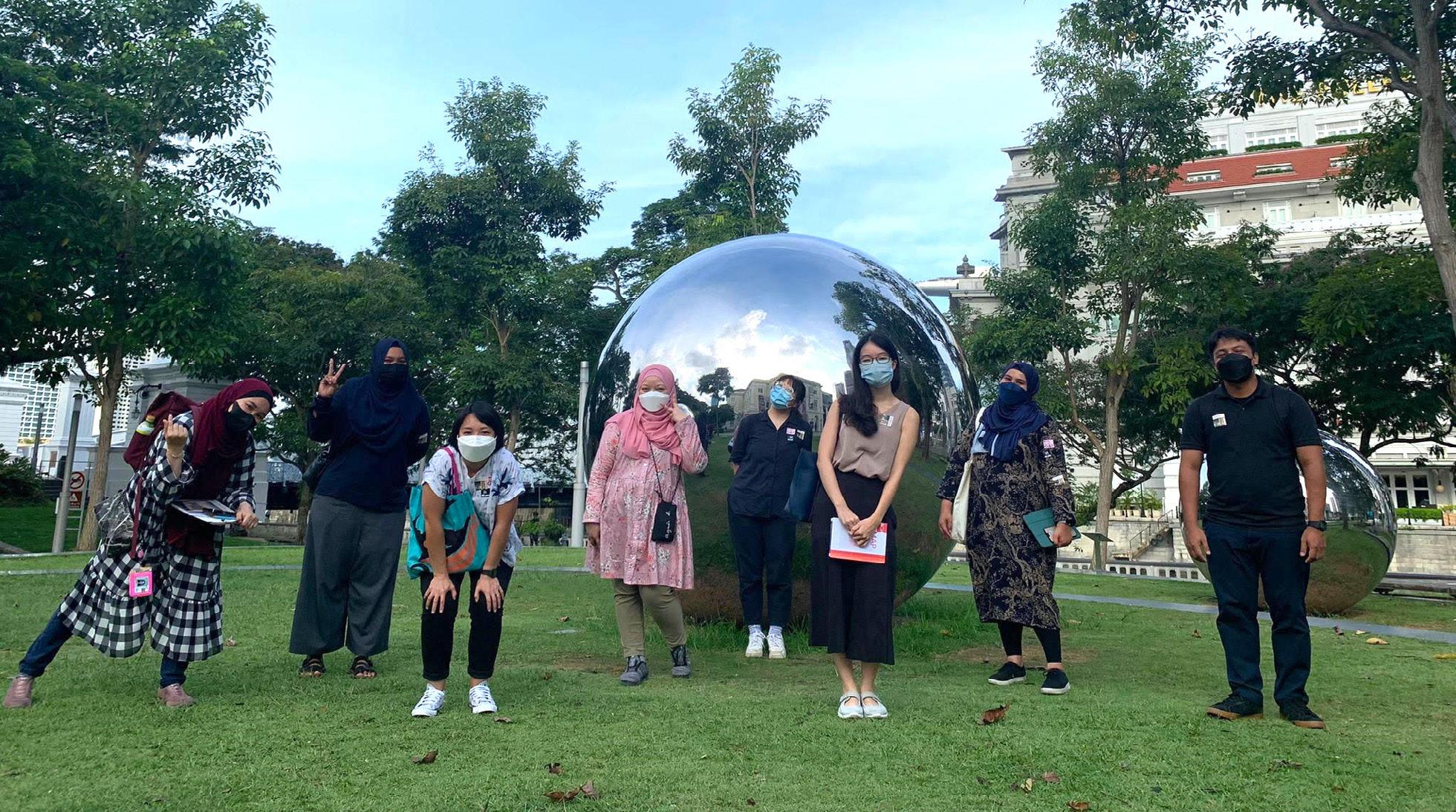
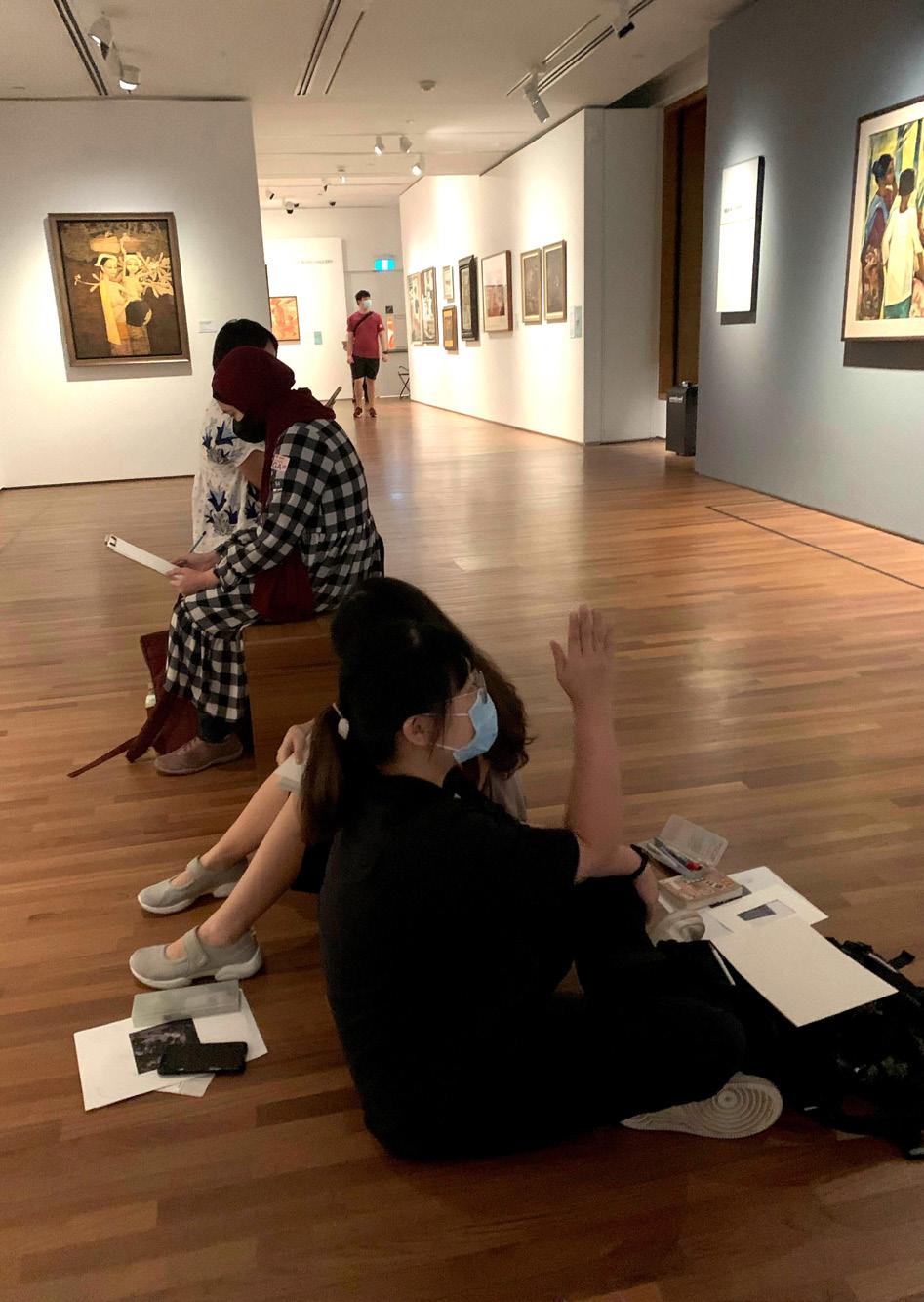
Sharpening active looking and listening skills to communicate clearly with a partner.
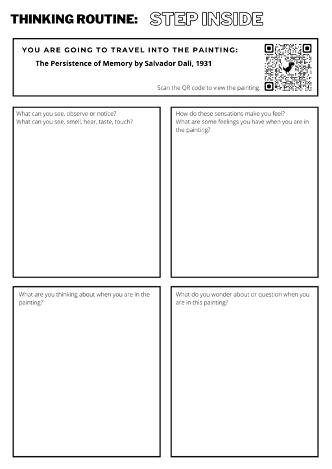
A worksheet created for my students that tap on MBL strategies as an introduction to Surrealism.
Growing together in our small MBL NLC community.
Drawing Learning NLC
This NLC welcomes teachers who are interested in exploring a spectrum of drawing strategies and resources to support teaching and learning in the art classroom.
By NLC member:
Mrs Rachel Tay
Subject Head Aesthetics
Rivervale Primary School
One really memorable session for me during the NLC was the ‘Task Party’. Like its name suggests, it truly was a celebration of diverse drawing tasks led by all participants. We got to try out a rich repertoire of activities leveraging different mediums to draw. Another highlight was attending Rob Sketcherman’s workshop on digital journaling as it gave me a greater insight into digital drawing that I was able to share with my own students during their art lessons!
Adding to this rich experience was the opportunity to be guided and mentored by the course coordinators in the implementation of our lesson units. Through the hands-on sessions and facilitated discussions, I was able to receive constructive feedback from NLC members on how to use the Drawing Inspirations resource kit ↗ effectively.
I appreciated how the NLC was a safe space for us to bounce ideas and have generative conversations to grow our pedagogical knowledge in order to effect quality art learning experiences for our students.
For more information for 2022’s run of this NLC, please contact Master Teacher, Art, Mdm Victoria Loy.
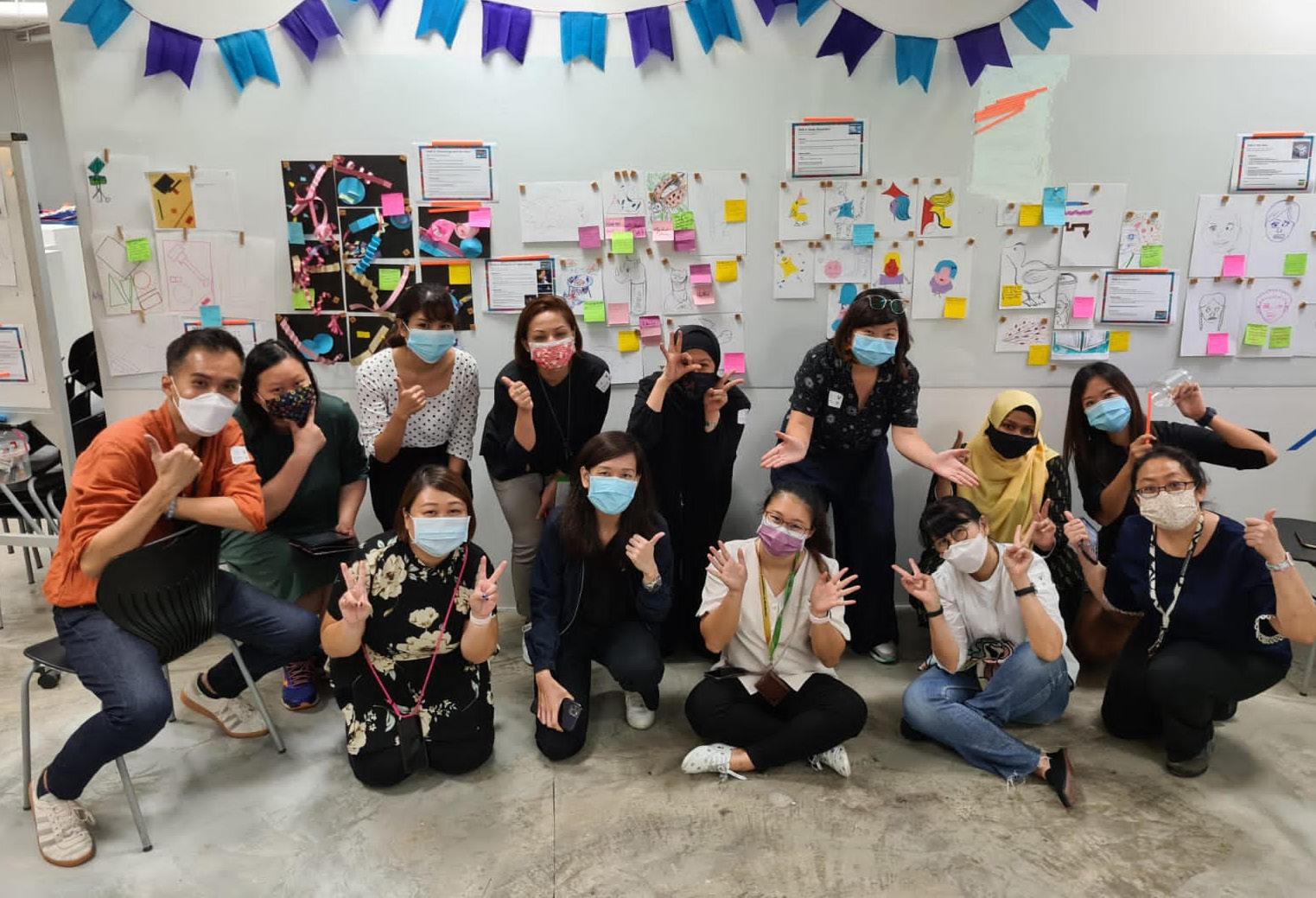
Art teachers from the 2021 Drawing NLC.
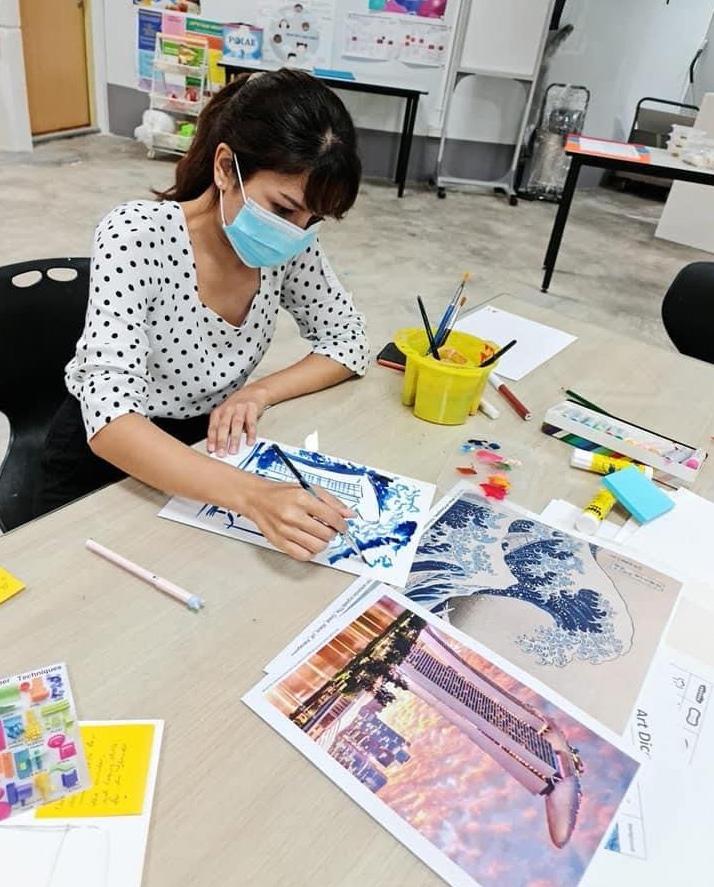
Participating in a Task Party activity during one of the studio sessions.
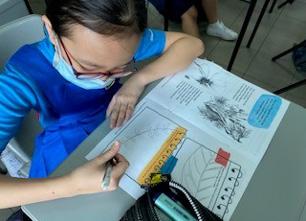
Implementation of lesson unit in Rivervale
Primary – getting students to observe from different viewpoints using prompts from the Drawing Inspirations Cards.
Collaborative Learning in Art NLC
This NLC was designed for teachers who are interested in exploring different ways of facilitating collaborative learning in the art classroom, so as to harness the potential of collaboration to empower students and build supportive learning communities.
By NLC member:
Mdm Nur Azimah
Binte
Mohd Jailani
Art
Teacher
Ahmad
Ibrahim Primary School
I started teaching as an art specialist, with Art as my sole teaching subject, 7 years ago. There is a constant need for inspiration and I wanted to look for opportunities which can help my professional development in the long run. Joining this NLC not only gave me that head-start but it also helped me network with the fraternity and kept me updated on the latest teaching trends. My journey is still far from over and there’s so much more to learn. I am glad NLCs are available for teachers who feel the same way I do.
The teachers shared about using ICT to support collaborative learning. One idea I picked up was Art Steps and I used the app for my schools’ annual art exhibition this year. It was a great introduction for my department as Art Steps can be used as an art review or critic lesson. I have also used Google Jamboard, Google Earth and Padlet for collaborative projects in the classroom and my students absolutely love it! This NLC has greatly encouraged me to upskill my digital literacy and now I am more capable of using ICT in my teaching.
This NLC will be refreshed as ‘Inclusive Art Classroom NLC’ for 2022, and explore more topics such as collaborative learning, universal design for learning, support for students with SEN and positive art classroom culture. For more information, please contact Master Teacher, Art, Mdm Chun Wee San.
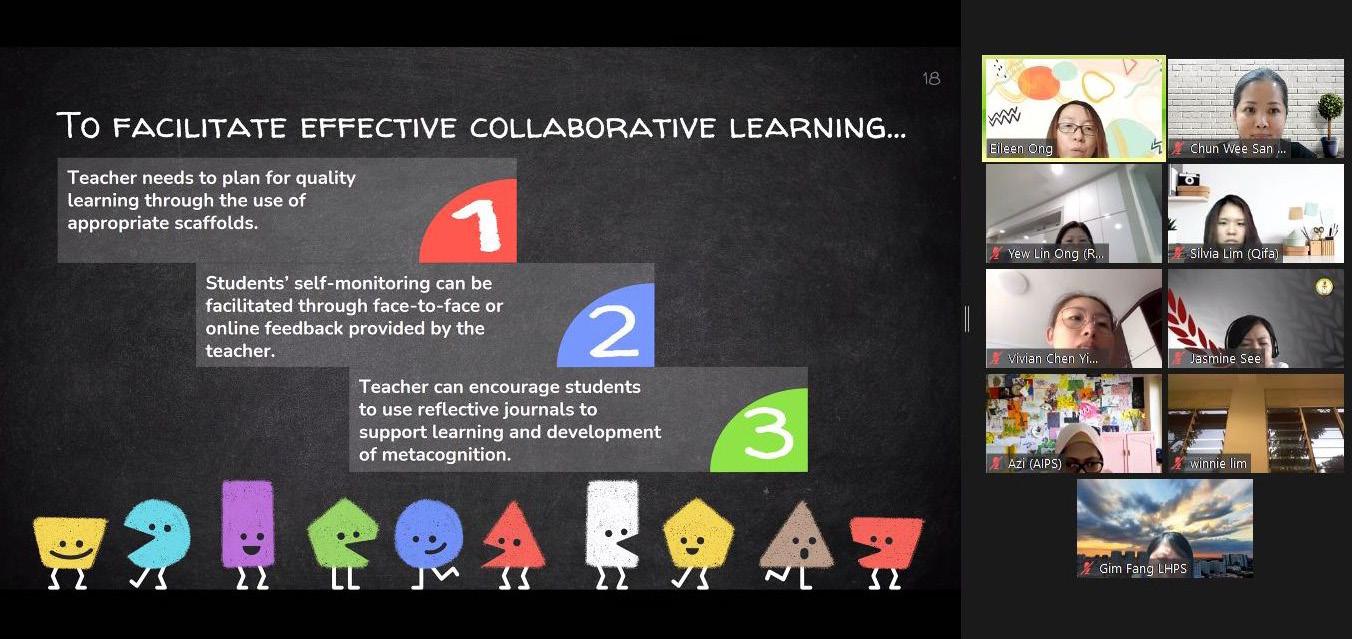
Discussion on strategies for effective collaboration.
From the ideas shared during the NLC, I was inspired to try out methods and platforms that promote and support collaborative learning in my art classroom.
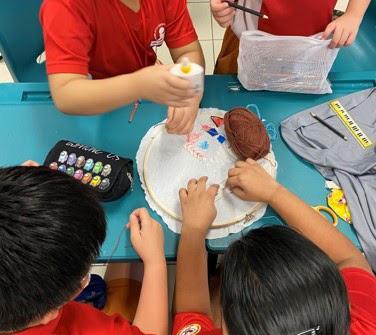
Primary 3 students working together on a Textile Art project.
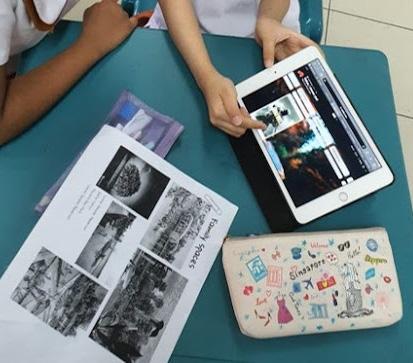
Students using Padlet during a group research activity.
Technology in Art NLC
This NLC welcomes teachers who are interested in expanding and/or deepening their knowledge of ePedagogy in Art and Blended Learning.
By NLC member: Ms Yeo Bi Xia Art teacher Cedar Girls’ Secondary School
I feel that NLCs are especially beneficial for art teachers as the schools I have worked in usually consist only of about 2 art teachers in the entire school. This limitation can be frustrating when we are seeking more conversations about ideas and
classroom observations specific to art classroom practices, such as Pedagogy/ePedagogy for Art, etc. On the other hand, in NLCs, art teachers who sign up are often very like-minded and eager to learn. What’s even better is that they come from different schools and teaching experiences too. I felt the learning environment was really positive and encouraging, and the MTTs that led the NLCs are often very selfless when it comes to sharing their knowledge and offering advice.
I’ve always thought of and explored ways to use technology in my art classrooms, but it is often abstract and tough to explain (especially to non art teachers), why certain things need to be done. It is also difficult to collect feedback and data to further improve the system when I can’t even verbalise that abstract idea clearly and convincingly. However, with the ePedagogy and Blended Learning knowledge gained in Tech in Art NLC, along with ideas and feedback shared by fellow art teachers and MTT in the NLC, I managed to communicate my intended, specific areas of focus to improve my teaching practices in the Art classroom, with the affordance of technology.
For more information for 2022’s run of this NLC, please contact Master Teacher, Art, Mr Lim Kok Boon.
One of the ideas I tried with my students is a ‘Playlist’ inspired by Catlin Tucker. This complements blended learning as it presents students with a curated list of learning activities and resources that they can self-pace through on their own.
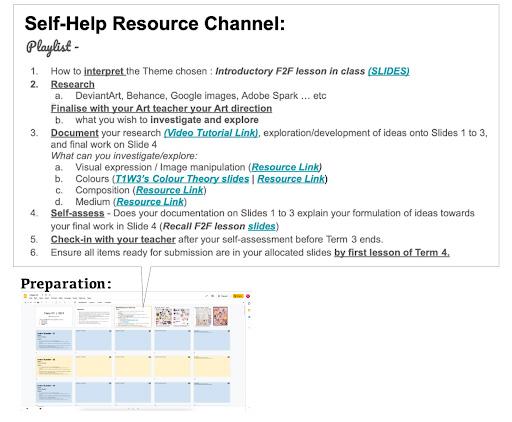
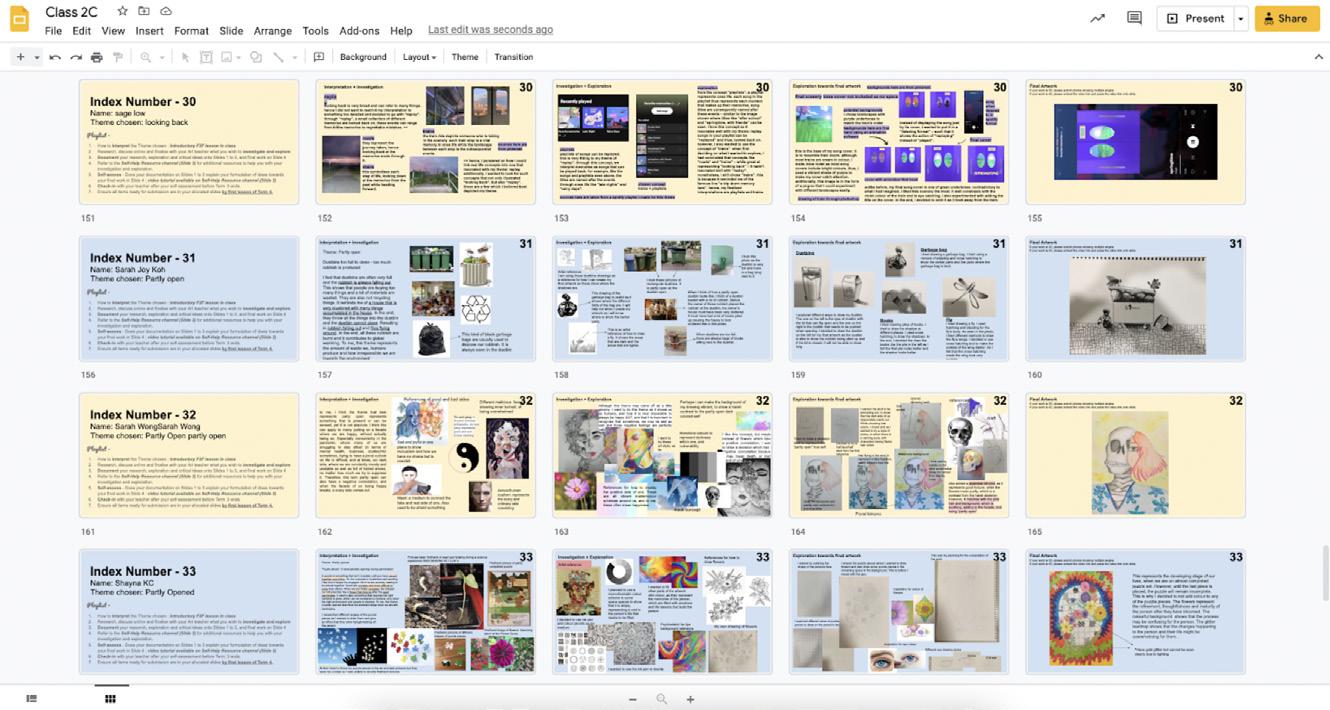
The Google Slides platform hosts the digital help resources in the Playlist format at the front. I then use class time targeting the differentiated needs of the students.
In small thumbnail format, I will be able to watch their progress and have a quick and comparative sensing of each student’s pace before looking more closely at their work.
Big Ideas in Art Education NLC
This NLC was designed for teachers who are interested in engaging in discussion about ideas/theories that were relevant in art education, and exploring ways to make each idea/theory visible in the art classroom through lesson design, assessment considerations and/or classroom environment considerations.
By NLC Core Team member:
Mdm Sim Siok Siok
Senior Teacher (Art)
Boon Lay Secondary School
I joined this NLC as I wished to have opportunities to learn from an Art MTT on how to co-design and co-facilitate a Networked Learning Community. This NLC provided a platform and a safe space for like-minded colleagues to learn, share and understand the real world context and needs of our learners.
In this NLC, as mentioned by MTT Ai Wee, there are no experts, but collaborators and contributors on the various topics discussed. I have learnt to keep andragogy in mind when facilitating NLC sessions – I want to be able to provide practical, helpful resources and takeaways for participants since teachers spend their precious afternoons and would appreciate fruitful discussions. This is also helpful for me in planning and conducting PD sessions back in school. The most fruitful aspect was having the opportunity to network and learn from each other, especially from MTT Ai Wee and my other core team member Pauline Goh (ST Art, Hougang Primary School). The exchange over meals and online discussion meetings made it such an enjoyable and meaningful learning experience.
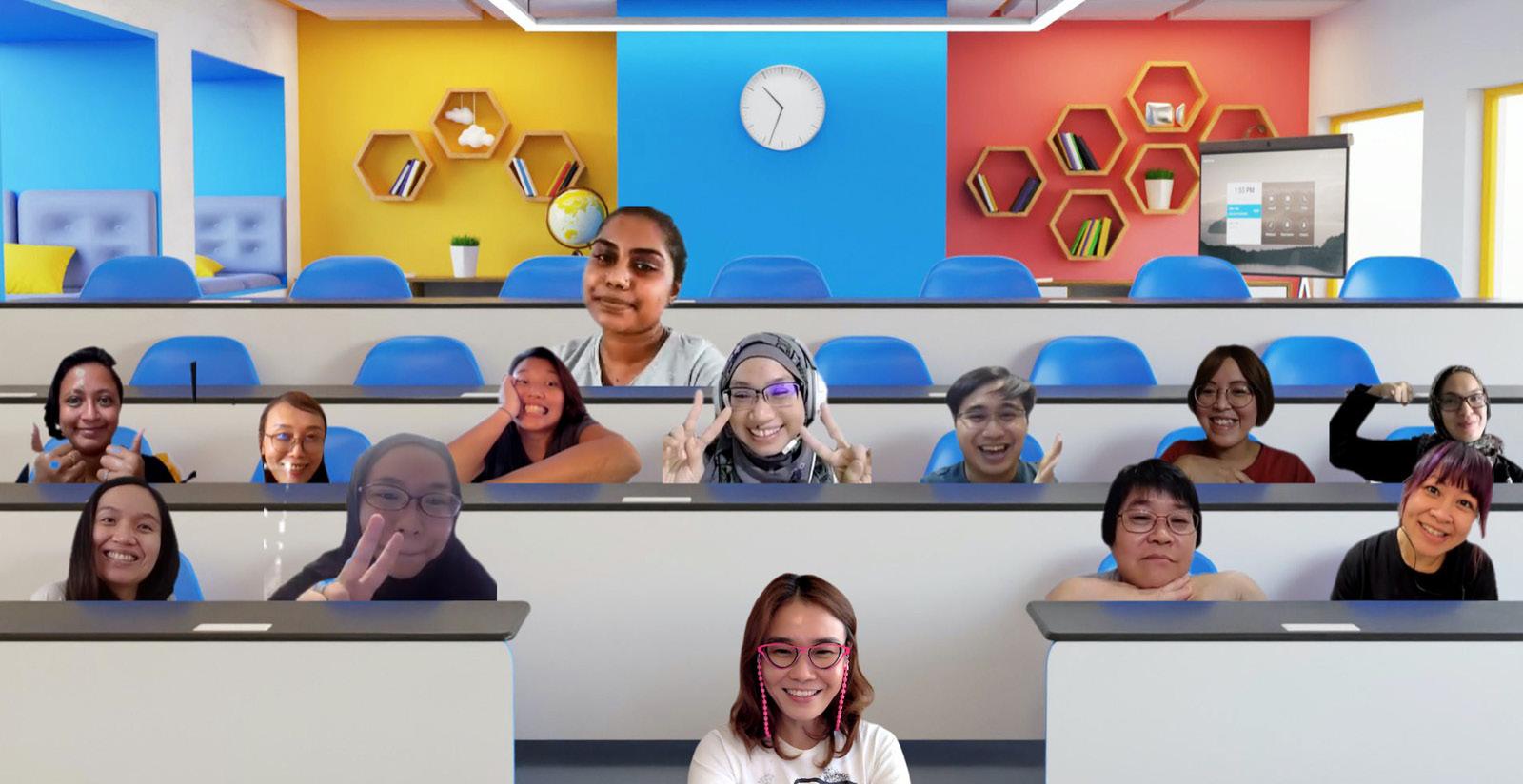
Our ‘class photo’ via Zoom!
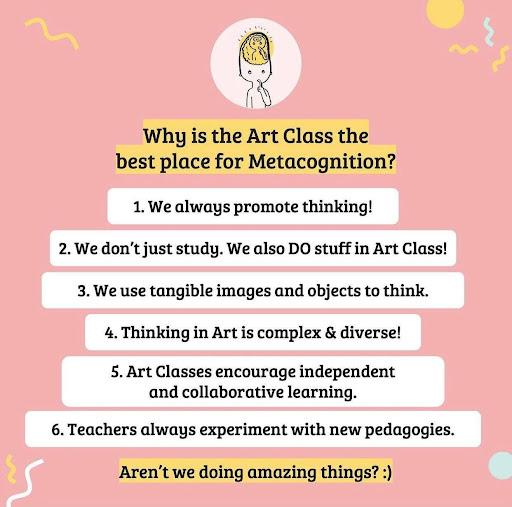
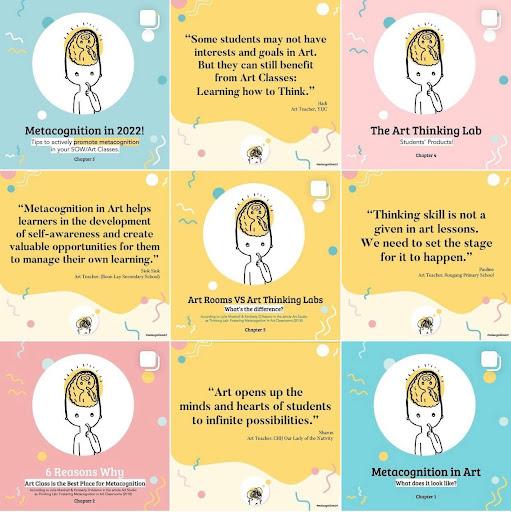
My group delved into the area of metacognition in art. One idea I enjoyed was how developing self-awareness creates opportunities for our students to manage their own learning. You may read more about this on our metacognition series on STAR’s Instagram @sgartstories ↗
Euphoria: Appreciation without Borders
Mr Mak Yew Chong Vice Principal, Bukit Batok Secondary School, Advisor to W7 Aesthetics NLC
Mdm Ang Hui Min Pauline Head of Department, Aesthetics, Rulang Primary School, Co-Lead Facilitator of W7 Aesthetics NLC
Mrs Clara Chua Phin Phin Head of Department, Aesthetics, Craft & Technology, Fuhua
Secondary School, Lead Facilitator of W7 Aesthetics NLC
Ms Er Kia Hui Subject Head, Aesthetics, Millennia Institute, Member of W7 Aesthetics NLC
Ms Ler Jia Yi Senior Teacher, Art, Fuhua
Primary School, Member of W7 Aesthetics NLC
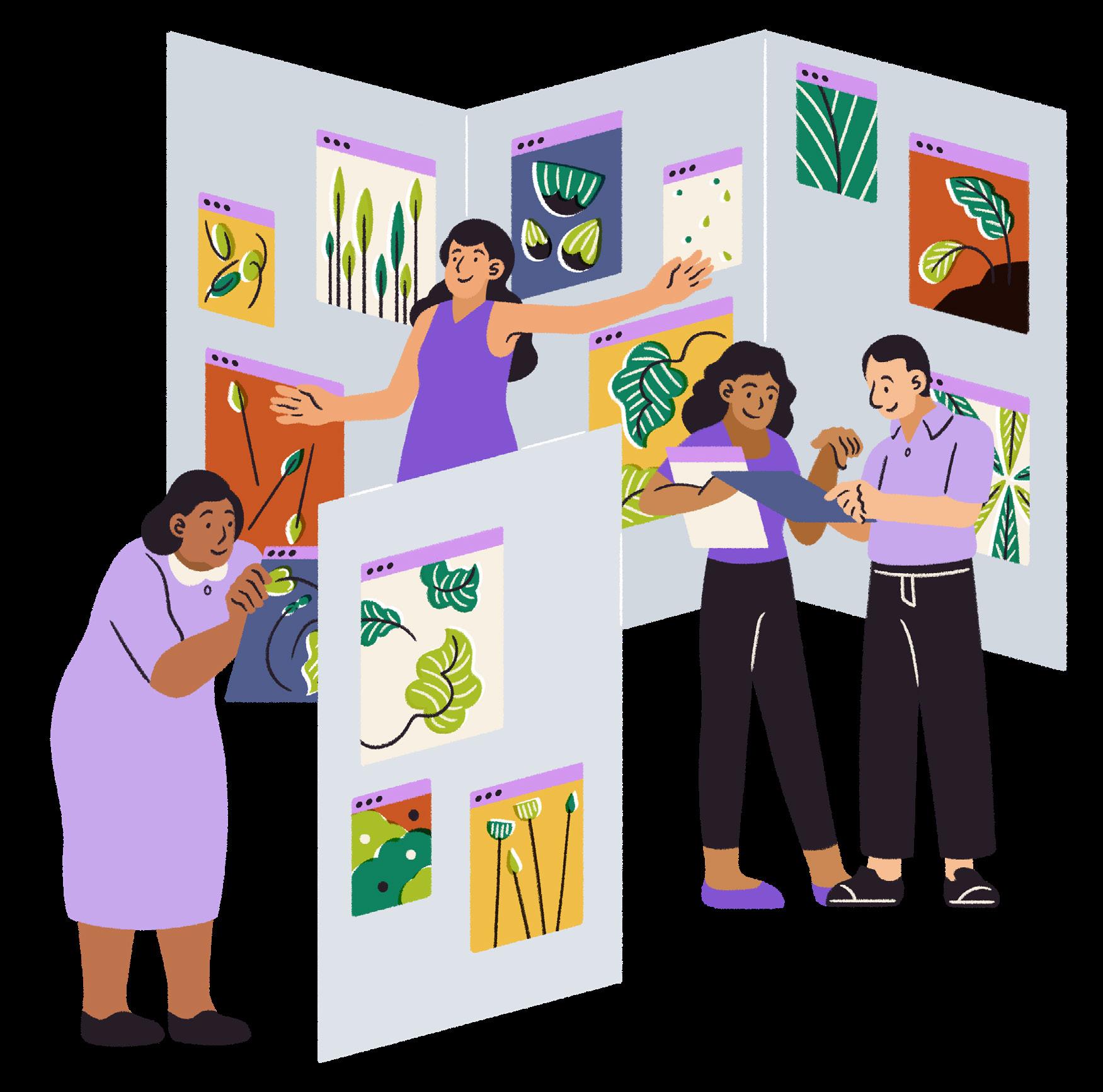
The W7 Cluster schools have collaborated over the last several years to showcase students’ aesthetic works and performances, and offer aesthetics teachers’ learning opportunities.
The Euphoria for the Arts Website (https://w7euphoria.edu.sg ↗) by West 7 (W7) Cluster Schools was launched on 14 Oct 2021 together with Euphoria V with the shared theme “Celebration of Diversity”. The website features the schools’ collaborative Performing Arts and Visual Arts efforts.
View the website here
https://w7euphoria.edu.sg ↗
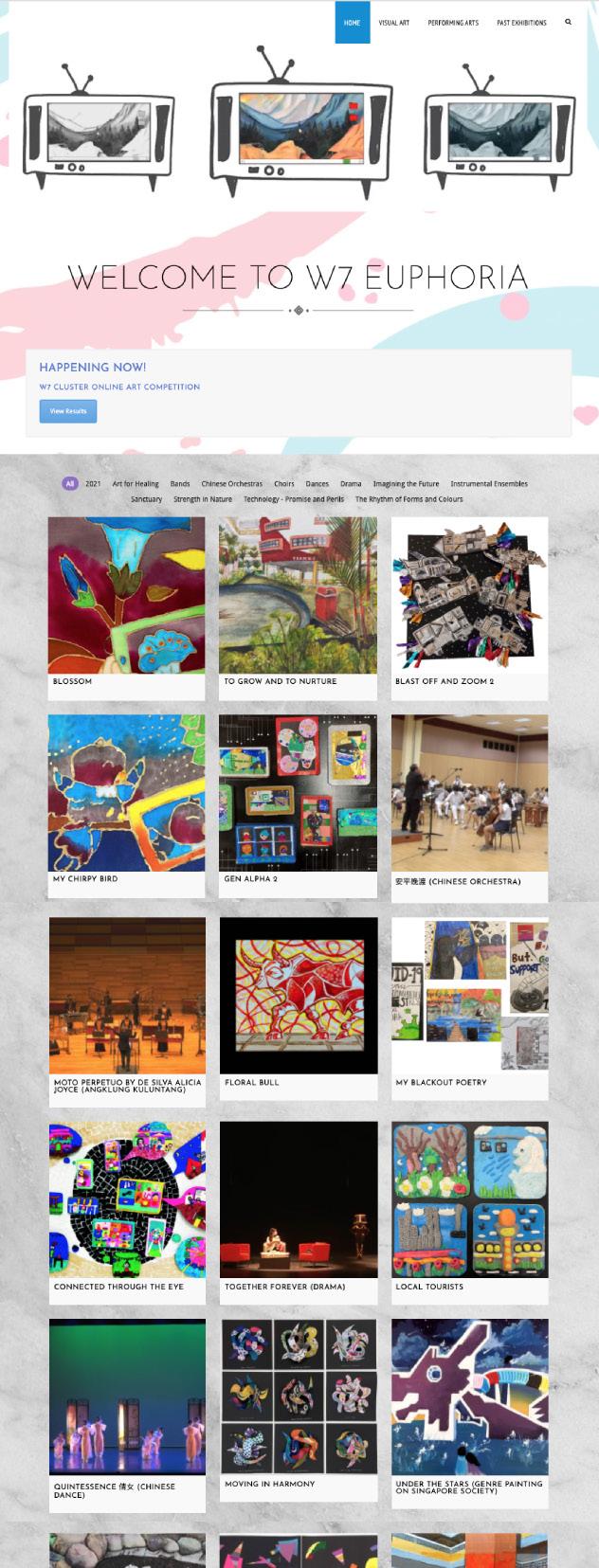

STAR Academy Officer Lorraine, joins 5 members of this Networked Learning Community (NLC) in this conversation to learn more.
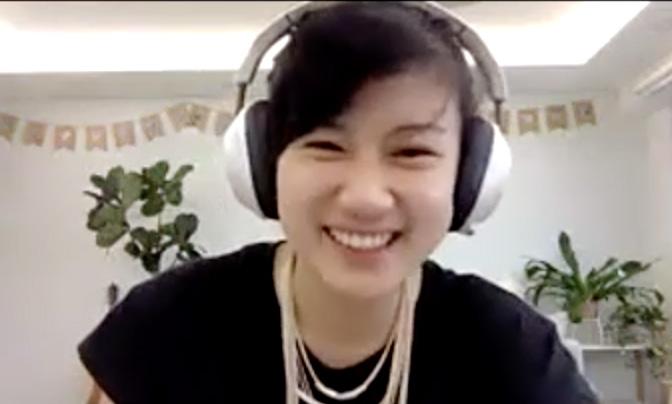
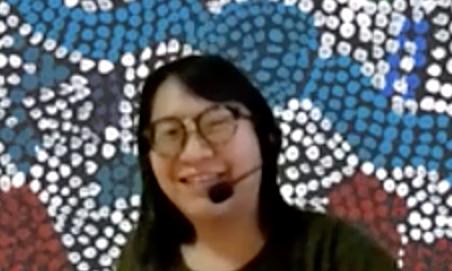

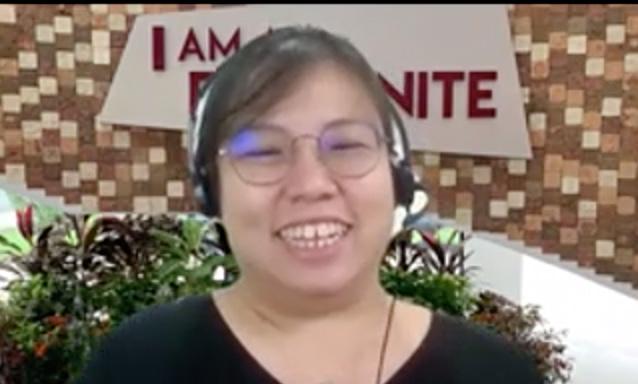


Congratulations on the launch of the 5th edition of the W7 aesthetics exhibition! Tell us about the history of this showcase.
Pauline: We had a roving exhibition amongst the cluster where artworks were rotated between schools. To prevent works from being damaged, I decided to seek a physical space at Jurong East library. Over the years the artworks grew more and more, and we started including teachers’ works - as we teachers are artists too. When Covid came, we decided to go online with ‘Art Steps’ last year. This year, we started to explore doing up a website.
Lorraine
Clara
Jia Yi
Mr Mak
Kia Hui
Pauline
Clara: Including the performing arts was a very natural process. We wanted to leverage on their talents, passion and involvement , and include them to steer aesthetic appreciation in W7.
Who is involved in this NLC and in what roles? How do the roles differ?
Clara: We have 20 members: 19 teachers and one advisor.
Pauline: We have 1 or 2 representatives per school who are usually art or music teachers.
What principles or structures guide the level of involvement to be manageable for members?
Clara: We have Terms of Reference (TOR) when it comes to deployment, to calibrate everyone’s expectations. At the same time we make sure that all voices are respected. Though we are aesthetics educators, we are also different. We have to embrace that diversity and differing levels of enthusiasm because we are mindful of commitments that teachers have in their schools.
Mr Mak: Aside from setting up the platforms, it is not about doing extra, but taking work that exists in school such as the performance and artworks, and putting it where the public can see and celebrate with us.
Kia Hui: It cannot be seen as extra work. Rather, if it is seen as something that helps you help your students, then whatever is learnt from the community can be applied to your school, and it will be sustainable as you would want to continue your involvement.
How has being an advisor/a leader/a member of the W7 Aesthetics NLC grown your capabilities?
Kia Hui: I work in a school with just another art teacher. With this
NLC we get to work with other colleagues of different teaching levels and it gives us a perspective of secondary and primary school art. As a JCCI art teacher, this helps me understand where my students are coming from.
Jia Yi: When we plan programmes beyond our school, we get to interact with teachers from other schools. The sharing is so rich and it builds my confidence to be more willing to share more. People also don’t judge you as this is a learning community and this supports my growth.
Pauline: I have learnt about curation from the secondary teachers, including how to phrase writing about the artwork, and I shared my learnings with the teachers in my school.
What practises have helped sustain learning within this group?
Mr Mak: NLCs are not just about showcasing and sharing good work, but also about each others’ professional development. Cognisant of the national directions, this year (2021) the team has identified Differentiated Instruction (DI) as an area that they would like to hone, and we had 2 workshops on DI. In 2022, we will look into lesson studies and lesson design to help each other sharpen our pedagogical skills.
Jia Yi: This NLC gives the members an opportunity to develop and share experiences. I remember once Pauline arranged for a watercolour workshop. This year we focused on curation. It is very natural and organic. There aren’t KPIs or checks to drive the NLC, only our passion and desire to make things work.
Mr Mak: What is important is that as long as the teacher has done his or her level best to inculcate the appreciation of music and art, that is enough. Don’t overdo or try too hard; you should enjoy the journey.
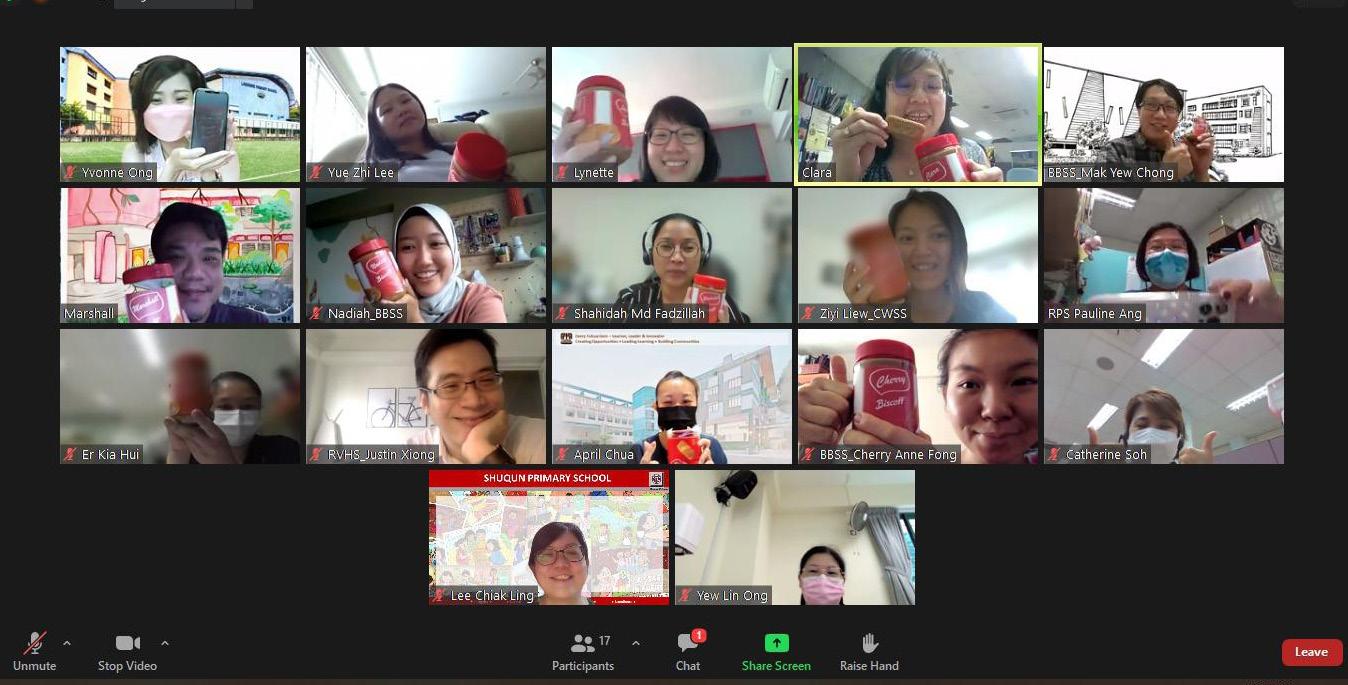
The NLC teachers with their personalised food item of appreciation at a recent online meeting.
How does being a member of the W7 Aesthetics NLC foster confidence for you as an educator?
Clara: It makes us realise that we are leaders in our own way, in our school, subject and STAR Champs. So we need to look at the impact of our curriculum leadership and reflect whether we are doing it right. This is pertinent, as Kia Hui observed, the unit is small - at the secondary level we are 2 or 3 art teachers, 1 or 2 music teachers. So this tripod cannot break down: if one goes, basically habis (we’re done for). The question is then who else can we look to? — This NLC provides us curriculum leadership.
Kia Hui: This NLC gives us a safe space to experiment. For example, curating beyond my own student’s work. It provides this space for us to be self-directed and discuss what we have tried with members. We can then bring back this spirit back to our own schools.
Pauline: For many years I didn’t dare to open up sharings, but this year I felt that our relationship is closer and I have the confidence to finally do so, and never mind if it’s wrong, so be it, tell me, I will improve. This year I’m braver to do this kind of sharing!
Mr Mak: From the School Leader’s (SL’s) perspective, we need to have the confidence to take up the roles. I am not an art teacher and
I don’t have the know-how of what is going on in the art scene. When I came into this NLC as an advisor, everyone was surprised, they asked ‘Why did you volunteer huh?’ And I said ‘Because no one else volunteered, so I volunteered.’ Our motives were very clear - it is for our students and for each other. And when all of us are in the right frame of mind, nothing is impossible. If you are an SL, it doesn’t matter what is the NLC you are in, as long as you know what the members want to achieve together as a team, the sky’s the limit.
What can aesthetics teachers do to advocate for the subject or for learning together?
Mr Mak: Start with the school leader. You have to convince your school leader first. First show vibrancy in the subject. For example, use open wall spaces as avenues to get students to appreciate art. When you have identified a certain objective, it is even better if it aligns with the school’s mission, vision and goals. Then share with the school leaders and get their support.
Pauline: You can try to collaborate with other departments in school. For example, this year I collaborated with the maths department. I said, ‘I’m very bored. Can we try something different? How about we try math concepts in animation?’. When I work with another department, I show them that our subjects are not standalones and we can work together. As long as the kids improve we know the objective is achieved.
Clara: The reason why you are an Art or Music teacher is because you have the love for the arts right? So stay true to your passion. Look out for likeminded people in or outside of your school. We come in as ambassadors to push the love for aesthetics, don’t lose heart and just keep pushing. At the end of the day it is not for promotion or to be noticed, it is the desire to steer the program for the love of aesthetics.
Pauline: Well said, Clara!
Jia Yi: Totally agree! We always say ‘Make Thinking Visible’ right? We must have the mindset to make our subject visible. We can influence the staff through sharing and well-being sessions and on the walls of the school and curated art display. Your colleagues can then see what the students are learning and the values that the teachers are teaching.

Click to watch this quick video introduction to understand more about our NLC journey.
https://youtu.be/pSVqdLqsrzU ↗
Creating “Magic” through our Aesthetics Diversity
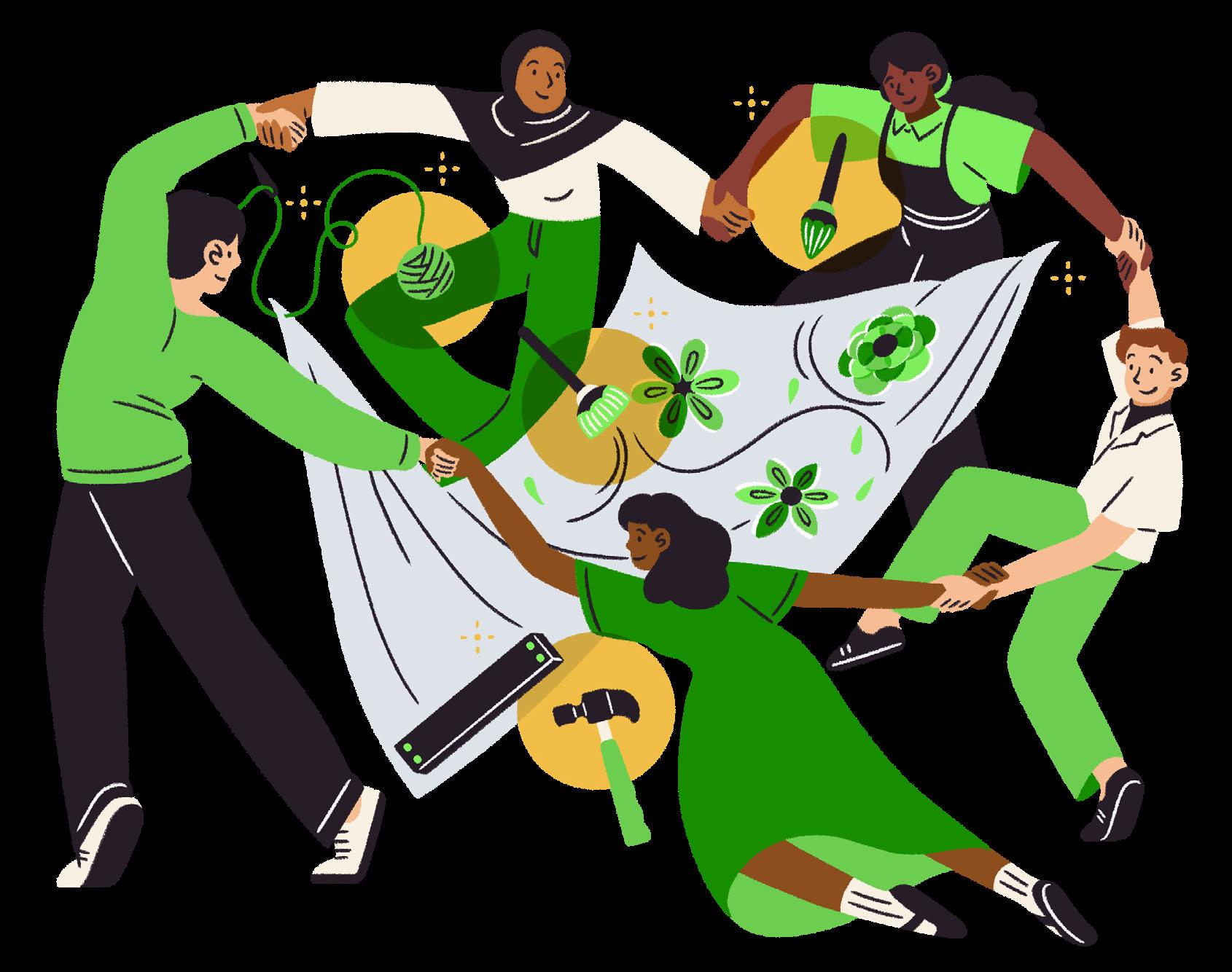
Same same but different
The word aesthetics is derived from the Greek word Aisthanomai, meaning ‘I perceive, feel, sense’. Similar to many other schools, the Aesthetics Department in Nan Hua High School offers subjects such as Art, Music, Design and Technology (D&T), and Food & Consumer Education (FCE) to our students. When I first joined the school, I could not help but notice that even though we are one department, there were inherent differences among the subjects. However, through the years, I have grown to realise that we have never allowed these differences to impede us to strive towards a common goal - promoting aesthetics as part of our lives. In order to achieve this vision, our department organises school wide Aesthetics programmes throughout
Mr Victor Gan Subject Head, Art, Nan Hua High School
the year, ranging from short assembly sessions to an arts festival that takes place over a few days. Resting on the philosophy that the whole is always greater than the sum of its parts, our department adopts a hands-on approach to deepen our understanding of one another’s subject. Through actual ‘doing’, we could not only discover and harness our common strength, but also identify and celebrate the diversity that exists within the department.
Understanding each other’s subject through “doing” Back when I was in Secondary School, I never had the opportunity to take FCE and D&T. Thus, I was extremely elated when the FCE teachers in our department decided to share and conduct a live lesson on the cooking of Roti Jala. Through the sharing, we could empathise and appreciate the nuances of FCE lessons, e.g. managing safety and time limitation. This planned interaction happened for all of the subjects: The Art teacher hosted a session of figure drawing for the department, the Music teachers taught basic music composition with Garageband and the D&T teacher exposed us to basic woodworking. These enjoyable sessions brought the department closer and we had the privilege of experiencing the magic of Aesthetics in all aspects of life that we hoped to imbue in our next generation!
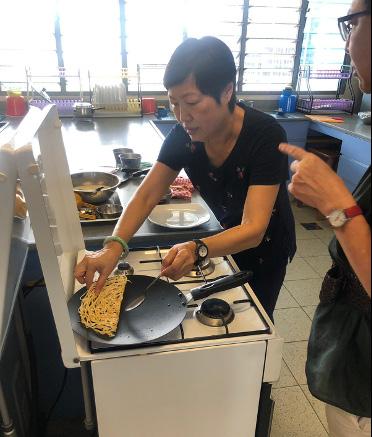
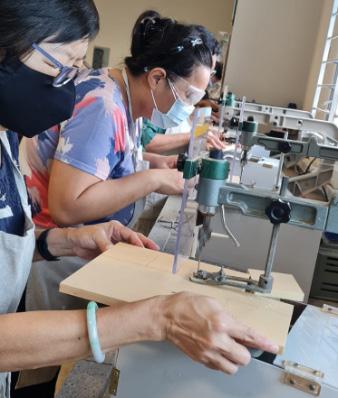
2019 FCE Teacher Mdm Lim Soo Mui demonstrating how to cook Roti Jala.
2021, FCE Teacher Mdm Lim Soo Mui and Art Teacher Mdm Jennifer Lai trying their hands at woodworking.
Seeing Aesthetics as a way of life
In 2020, most of our Aesthetics programmes had to go online or take on a hybrid approach. One of these programmes was our annual ArtsFest. The primary objectives of the ArtsFest were to provide a platform to showcase students’ works and to allow them to experience activities offered by our Aesthetics Department. Identifying the new hybrid format as an opportunity, I decided to start a series of videos, titled “I am…” These videos were meant to encourage our students to pick up new skills by showcasing the participants’ response after experiencing the various activities organised by the department. I was pleasantly surprised by both our teachers’ and students’ passion and interest areas and it was definitely a valuable opportunity for me to get to know everyone at a more intimate level. For example, I discovered that a boy who was known for his excellent basketball skills also turned out to be an avid accordion player.
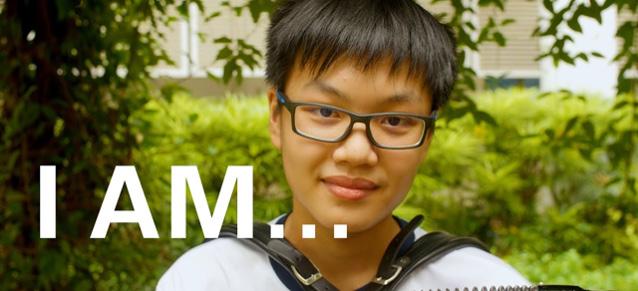
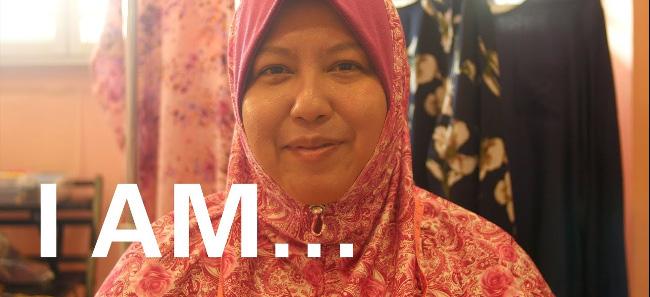
The whole is greater than the sum of its parts
An Art Installation that brings the department together.
After understanding each other’s subject and interest, planning ArtsFest 2021 became a collaborative effort and a testament of the department’s growth over the past few years.
After numerous discussions, the department decided to rally all our Lower Secondary students to create a fabric flower mural. The entire mural spans across 10 meters in length, and consists of nine class banners that are strategically placed in one front of our lift lobby at level three.
While the art teachers oversaw the overall aesthetics of the project, the FCE teachers Mdm Nur Irdawaty’s and Mrs Lim Soo Mui’s advice and contribution were pivotal in the execution of the project. “Fabric Flowers” was previously introduced as a FCE module to the students in the 2020 Annual Arts Appreciation, which was another key aesthetic event. The coherence of this planning also benefited from the FCE teachers’ understanding of the intricacy and time required to make the installation possible.
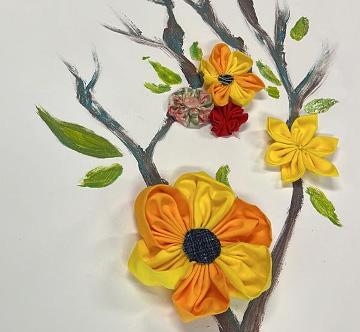
The department started by co-creating a small prototype together to test the mechanism and suitability of the materials.
During the installation of the project, the department relied on the expertise of the D&T teacher, Mr Cheng Kian Hua. He worked closely with the school’s operation manager and proposed a few methods of hanging up the banners. He also worked closely with the FCE teachers who sewed the banners, as the method of sewing was dependent on the hanging method.
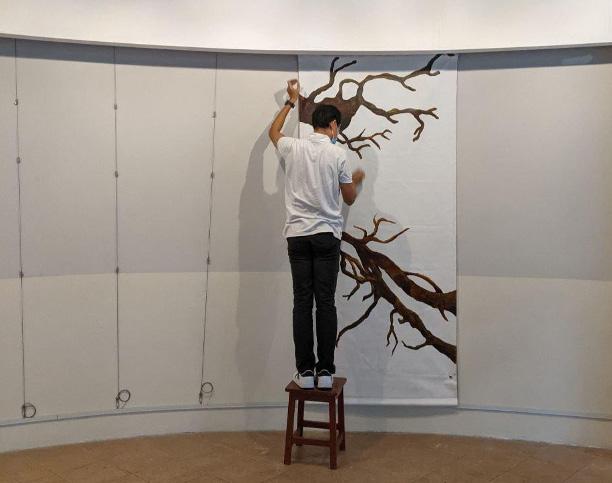
When the project did not go according to plan due to the evolving COVID situations, the teachers stepped up and contributed in their own ways to make the project possible.
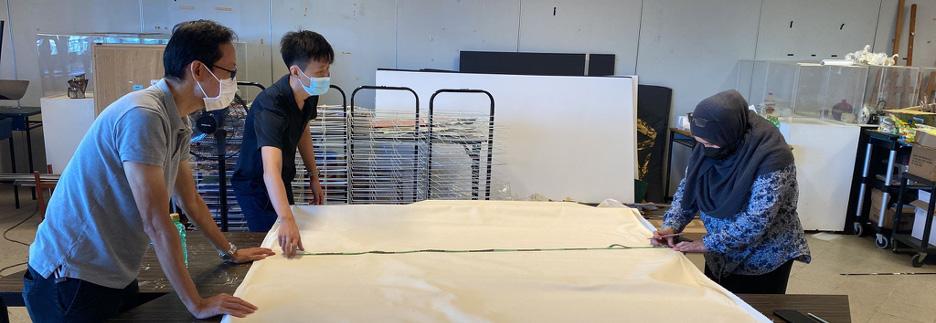
Mr Cheng Kian Hua, the D&T Teacher testing out the hanging mechanism of the installation
Learning about sewing from FCE teacher, Mdm Nur Irdawaty (right).
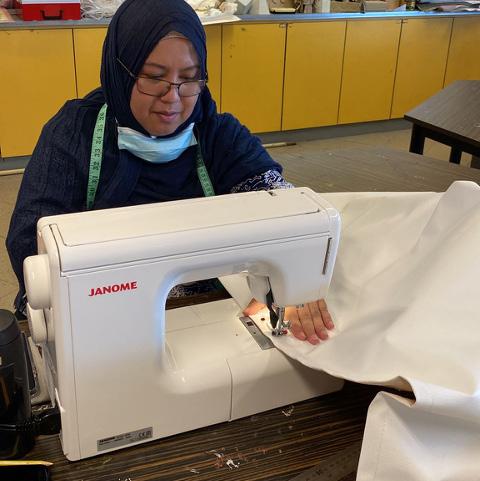
As the art and design club students could not return for face-to-face CCAs, the art teachers and music teachers painted the branches and leaves on the banners that the FCE teacher sewed. Though they were tiring, the work sessions brought the department closer as we worked towards a common goal. Additionally, the department was able to learn more about sewing, hanging mechanisms and painting from the respective teachers.
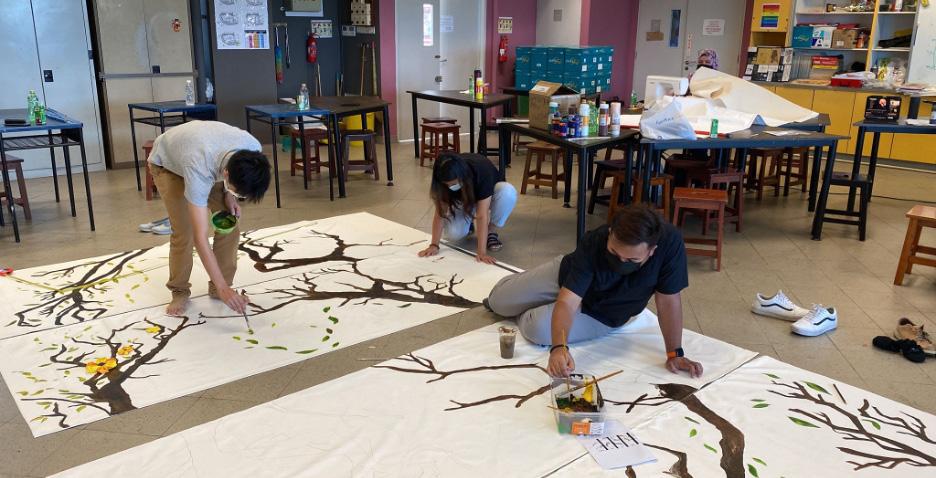
Mdm Nur Irdawaty sewing the banner to prepare for painting.
Music teacher Mr Herman Suratman (right) joined the Art teachers to prepare the base for the students.
When the artwork was installed, the visual impact of an installation at such a scale created a huge sense of accomplishment in the department. Each of the teachers in the department recognised his/her own contribution to the project and experienced what is meant by “The whole is greater than the sum of its parts”.
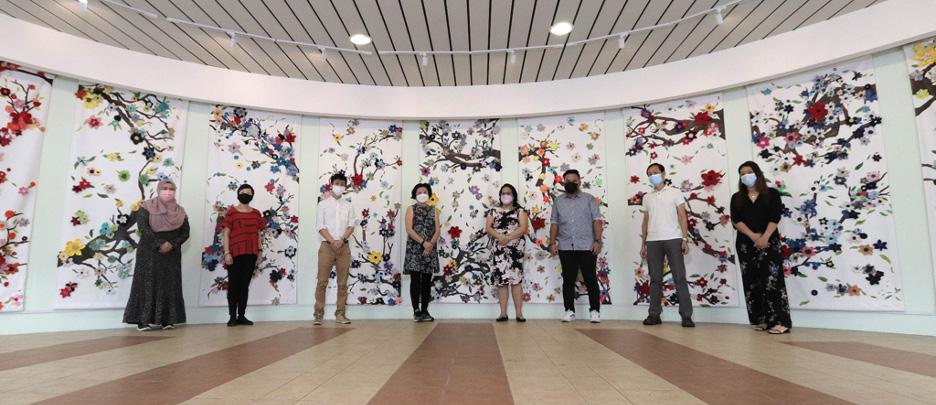
Celebrating differences through a common vision
Being a subject teacher of a highly specialised subject such as Art or Music in a school may feel overwhelming or even lonely at times. However, it is comforting to know that there is much commonality in our professional expertise that we could always draw from each other. This is especially powerful when we are grounded in a shared vision for our students. Furthermore, by immersing ourselves in activities conducted by our department colleagues, we are able to leverage on our common strengths, celebrate our diversity and experience mutual respect for each other’s skills and craftsmanship.
It is comforting to know that there is much commonality in our professional expertise that we could always draw from each other.
Nan Hua High School Aesthetics Department with ArtsFest 2021’s Art Installation.
Ms Yeo Hui Qi
22 Words for 2022
Art Teacher, Concord Primary School
Mr Muhammad Razali bin Puasa
Assistant Year Head, CHIJ St Nicholas Girls’ School (Secondary Section)
With ideas contributed by
Ms Cheryl Tan
Subject Head (Aesthetics), NorthLight School
Mdm Leow Siew Peng
Senior Teacher (Art), South View Primary School
Mdm Corinne Lee
Art Teacher/Coordinator, St Andrew’s Junior College
Ms Sim Kim Hong
Art Teacher, Nanyang Junior College
How can art teachers care for themselves and others, keep learning, and be advocates for themselves and art education? Here’s some ideas to cherish and practice for 2022!
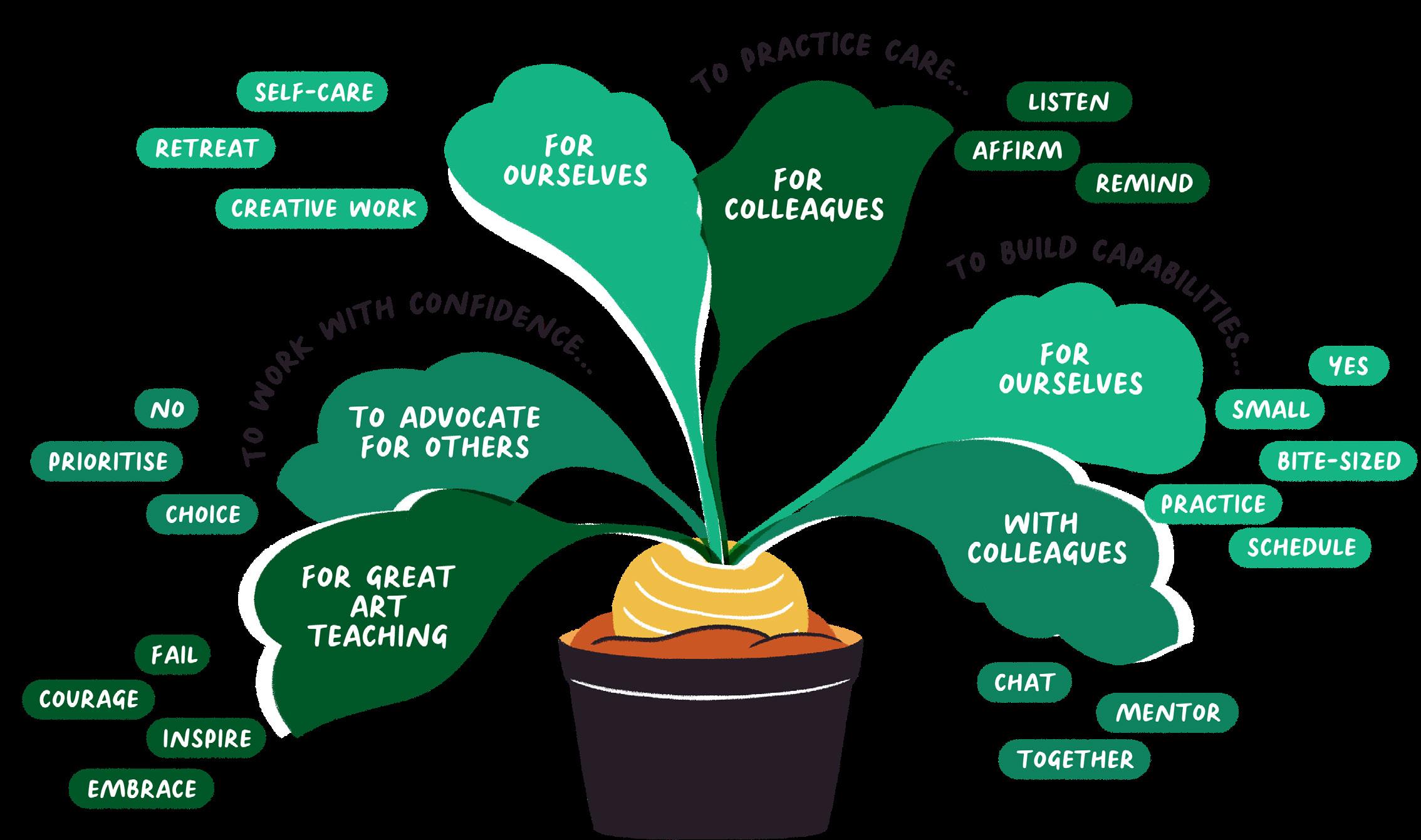
With reference to Oxford Languages and Cambridge Dictionary for definitions
Mentor /ˈmɛntɔː/ noun
⚫ An experienced and trusted advisor.
Let’s view all our colleagues as both our mentors and mentees, so that we remember that there is always wisdom we can learn from them, and wisdom we can share with them.
Chat /tʃat/ verb
⚫ To chat is to talk in a friendly and informal way.
“If we want to grow as teachers – we must do something alien to academic culture: we must talk to each other about our inner lives.”
— Parker J. Palmer
When we chat with our colleagues we inevitably learn about ourselves and each other’s perspectives and insights.
Listen /ˈlɪs(ə)n/ verb
⚫ To listen is to make an effort to pay attention to what someone else has to say.
We can practice caring for one another by being observant of our colleagues’ feelings and offering our listening ear without judgement.
Find trusted friends, mentors and mentees to chat and listen to.
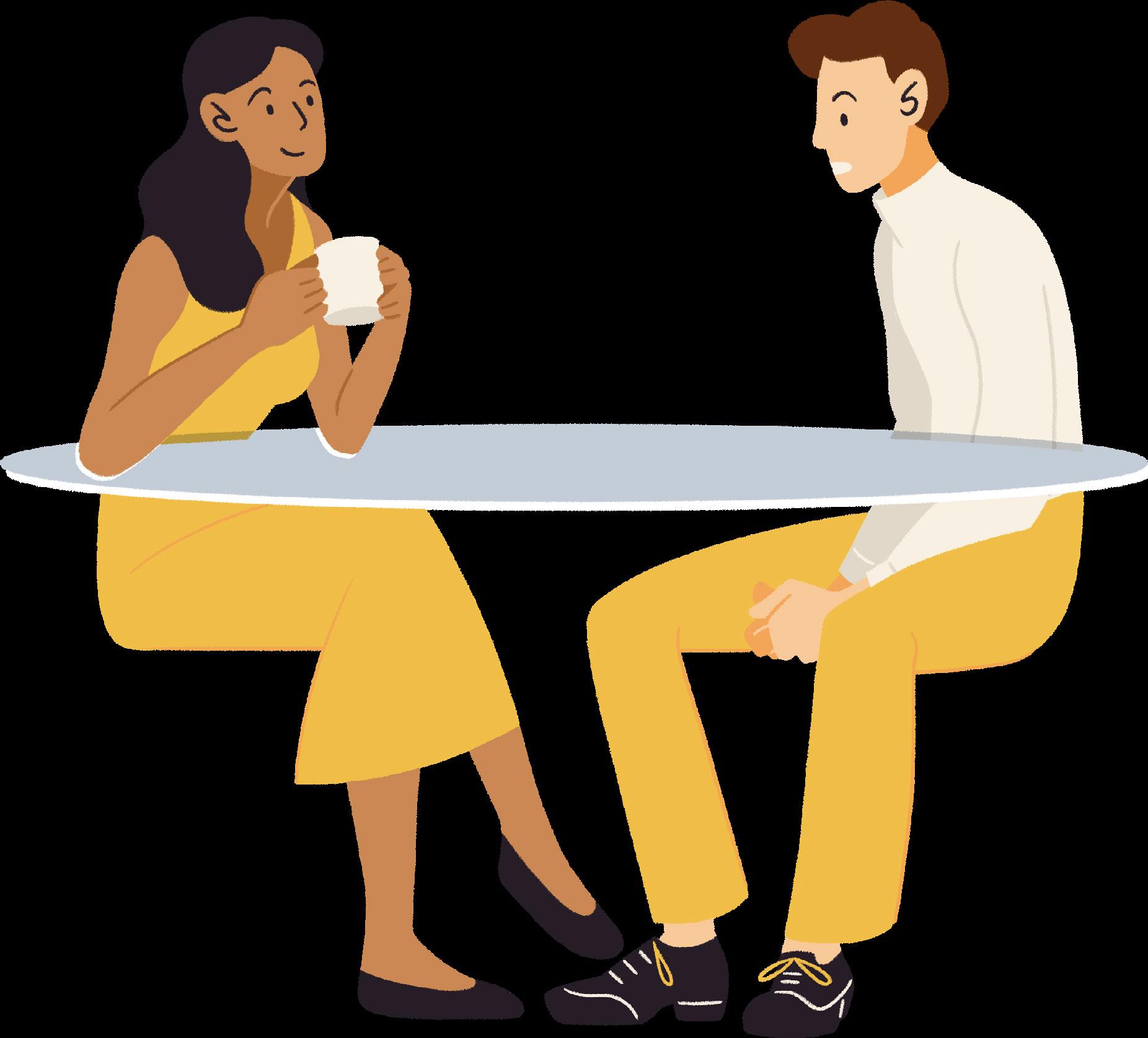
Affirm /əˈfəːm/ verb
⚫ To state your support publicly.
⚫ To offer someone emotional support and encouragement.
When we affirm our colleagues and students, we signal to them that we acknowledge them and their efforts. This can powerfully encourage them to teach and learn with confidence in their own abilities and potential.
Remind /rɪˈmʌɪnd/ verb
⚫ To cause someone to think of something they might have forgotten.
Reminders are acts of care which show colleagues that we want to ensure they can do well and be well. Let’s continue to help each other by reminding both about work matters and matters of personal well-being.
Affirm and remind each other often.

If what you want to do or learn is too big and scary, have it in small bite-sized portions.
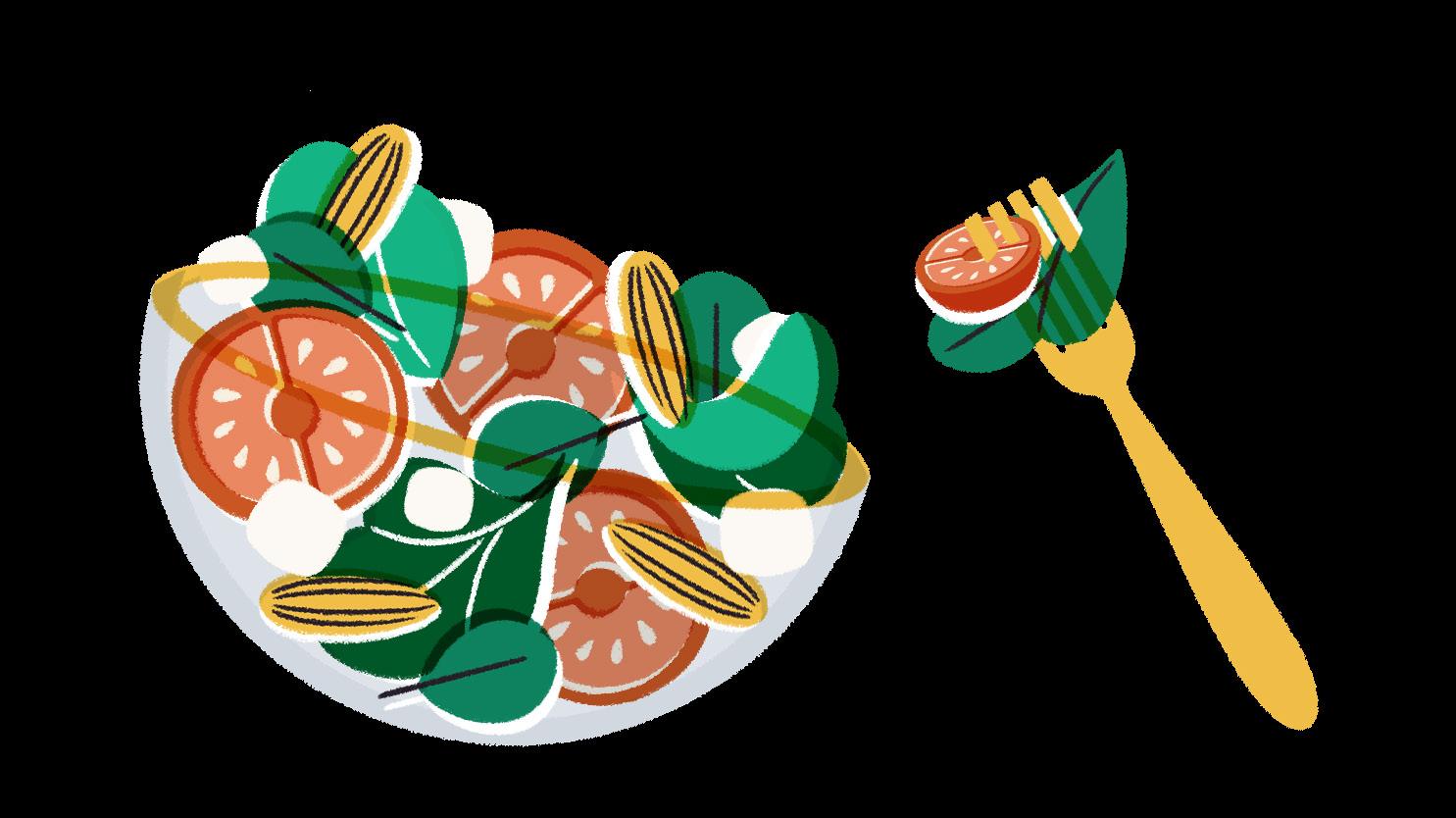
⚫ Describes something at a modest scale.
Instead of ‘dream big, start small, fail/learn fast’ how about ‘small goals, start small, and go slow’. This builds sustainable practises. For instance, sketching daily is a huge commitment, but sketching once a week is flexible and achievable! For artist Carol Marine, her art practice flourished once she let go of large canvases and opted for small ones.
⚫ Describes something small and short.
Bite-sized ideas can keep us informed and inspired for our teaching practice. Rejoice that content creators are serving up ideas in digestible portions via Instagram, podcasts, Youtube and MicroLearning Units on OPAL 2.0. Have you seen STAR’s IG — @sgartstories? What’s your favourite way to learn on the go?
⚫ Saying ‘yes’ indicates that we affirm or accept an idea.
As teachers, we probably have a long wish list. How about saying ‘yes’ to one or more of those items for 2022? We may be surprised to find that joining that NLC, taking on an unfamiliar role etc. may enable us in unexpected ways.
Read Euphoria: Appreciation without Borders ↗
/nəʊ/ determiner
⚫ Saying no indicates that we reject a proposition/request.
We can’t accede to every request without burning out, but If we are on the receiving end of a ‘no’, we would probably feel unsupported. Try this: say ‘no’, and gently offer an honest reason and an alternative that the requester can consider.
Choice /tʃɔɪs/ noun
⚫ Having options.
Let us also empower each other with choices to self-advocate for our needs and express our views. Is ‘x’ or ‘y’ or ‘z’ what we most want to work on/learn as individuals or as a team? Should we start it now, next term, or next year? Can saying ‘no for now’ be an option?
Allow ourselves and others choices, including yes or no.
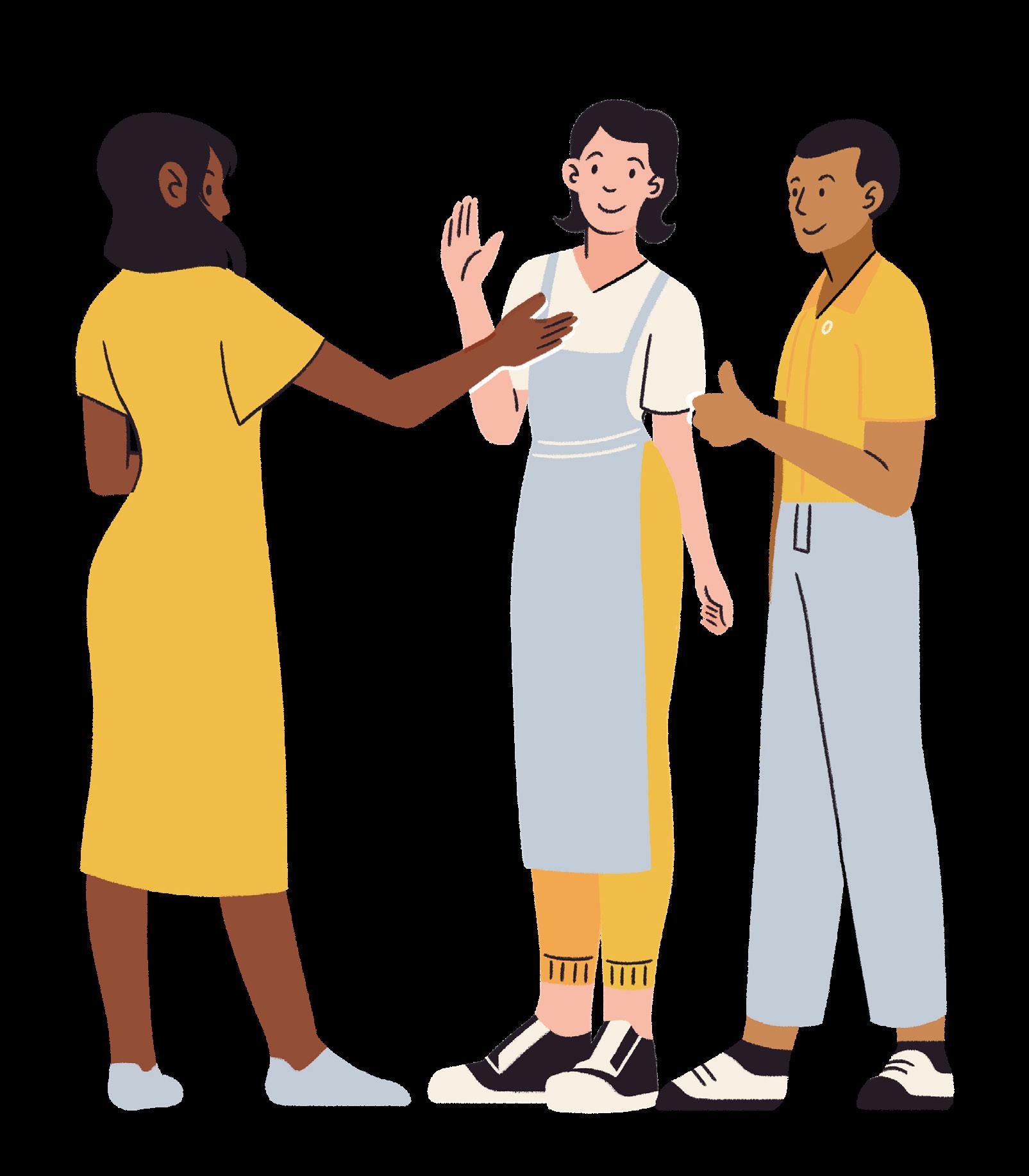
Gain clarity for each day by prioritising and working out a schedule.
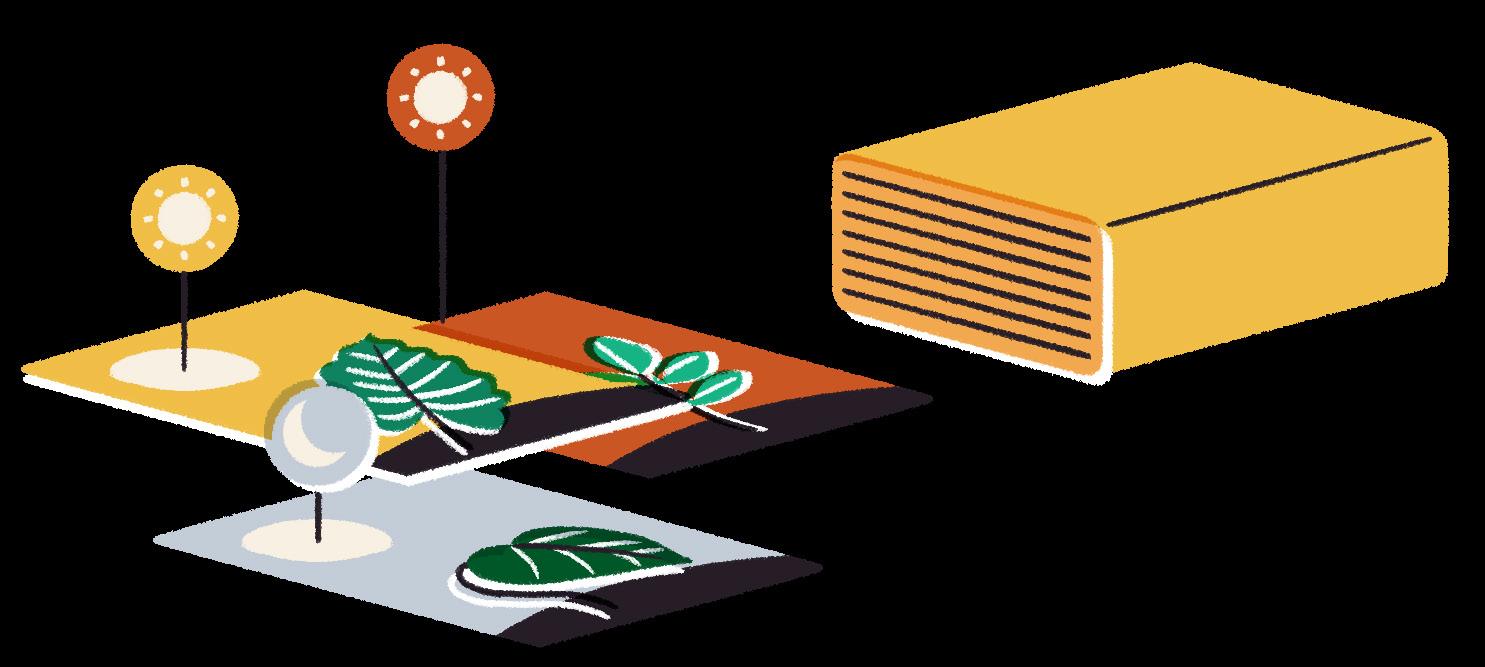
Prioritise
verb
⚫ To designate high importance to something.
There are several methods to prioritise which largely fall along similar lines of listing, reviewing then deciding. This reflective exercise should lead us to confidently identifying what we need most for the given time. Not too sure if a project is worth working on? Grab a friend or mentor to hear your considerations and be your sounding board.
Schedule
⚫ A plan in the form of a list of events.
The aim of scheduling is not to maximise but to optimise capabilities.
Set non-negotiable appointments with others such as teaching periods, school meetings, and family needs. Then set appointments with yourself such as time for independent work, exercise, and learning. Lastly, ensure you have generous margins to buffer for ad hoc needs.
⚫ The act of actively taking care of your well-being.
As teachers we naturally give so much to our students and our work. To re-centre ourselves, self-care can be practised with scheduled ‘me time’ to do something on our own that nourishes us so that we can show up more fully for ourselves and others.
Read Debunking 6 Myths about Self-care ↗
⚫ A period of time used to think carefully apart from normal activities and duties.
Do you picture a beach resort or a work plan meeting? By definition, both are forms of retreats. For yourself, what would be ways you can create regular moments to step away from the ‘noise’ of the everyday, to reflect, reset and recharge?
Take regular retreats as part of self-care.
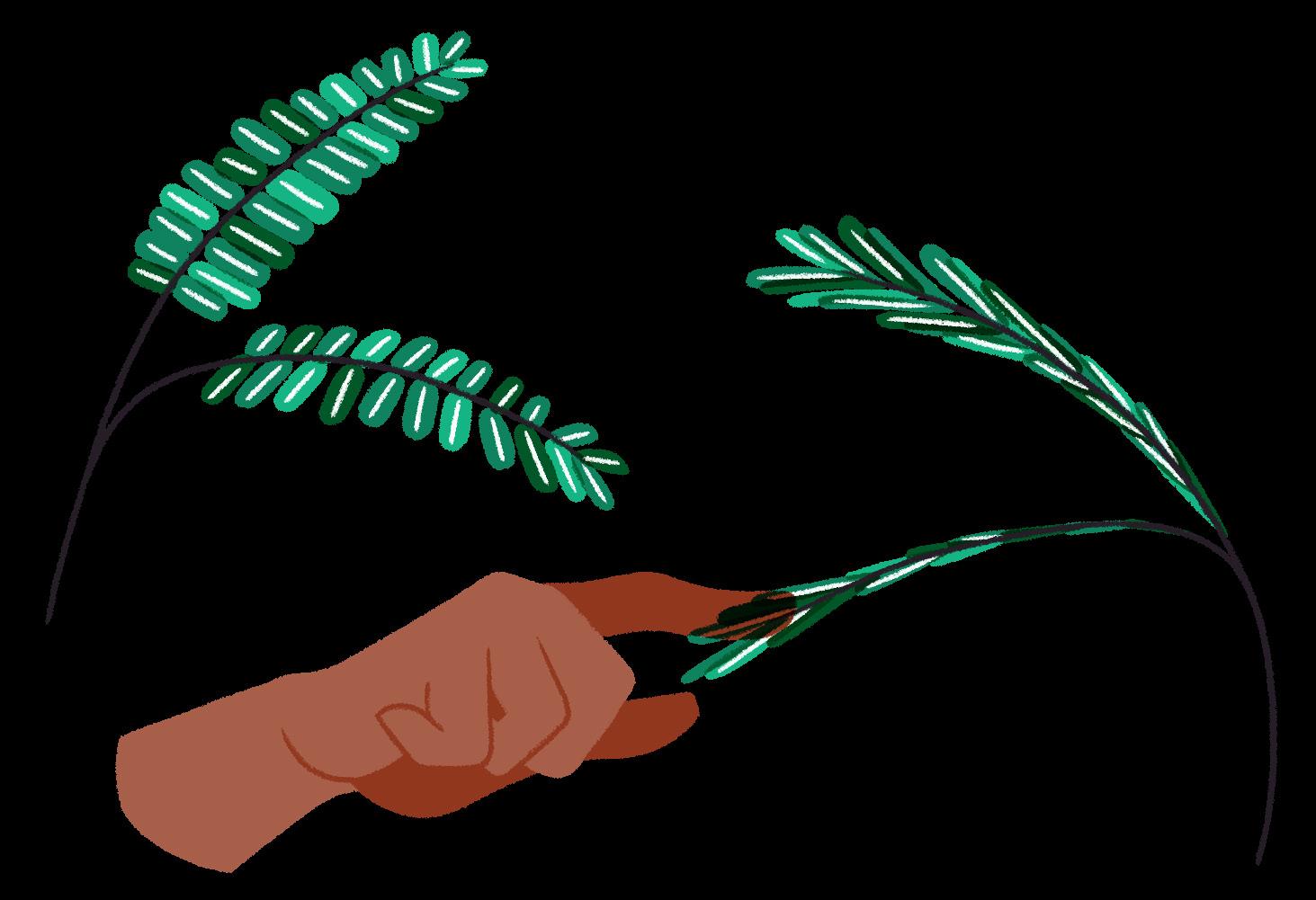
Creative work /kriːˈeɪtɪv/ /wəːk/ noun
⚫ The manifestation of a creative effort, such as products from the arts.
As we guide young people in their creative work, let’s give ourselves opportunities to make our own too!
“The most regretful people on earth are those who felt the call to creative work, who felt their own creative power restive and uprising, and gave to it neither power nor time.”
— Mary Oliver
Practice /ˈpraktɪs/ noun
⚫ To do something regularly to gain skill.
Grasp every chance to practice your art making whether it is by specialising in one craft or by acquiring many art forms so that you can share a rich variety with your students.
Together /təˈɡɛðə/ adverb
⚫ With each other.
Seeking motivation? Try these:
— Repurpose some department meetings for colleagues to learn each other’s craft, or make work together.
— Exhibit teachers’ work together.
— Sign up to take a studio-based course together. Read Creating “Magic” through our Aesthetics Diversity ↗
Find avenues to practice creative work together.
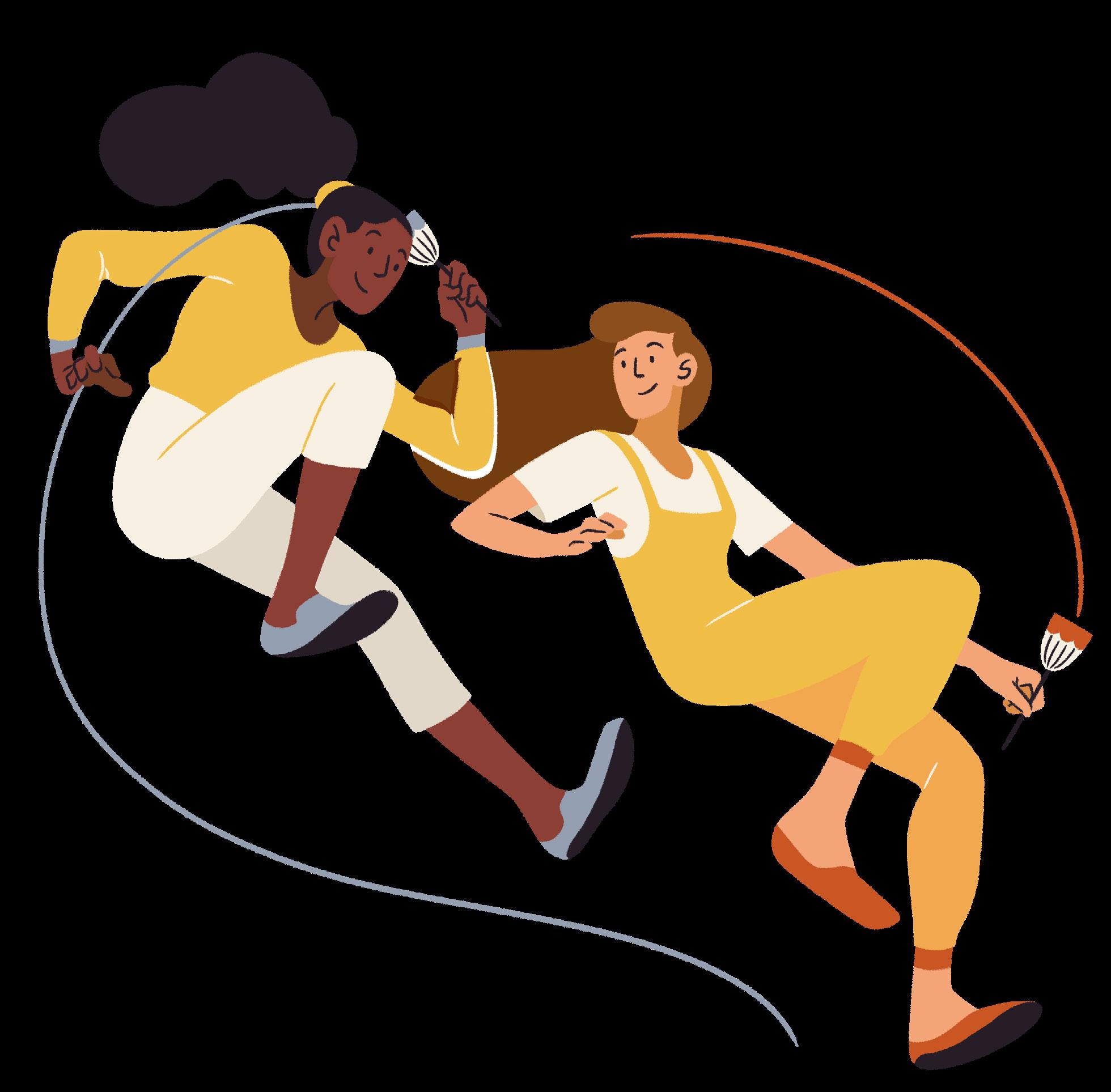
⚫ Something not succeeding.
F.A.I.L. can stand for ‘First Attempt In Learning’. A beauty of art education is the many ways we can show students how to repurpose that inescapable failure into discoveries and possibilities. Teach learners and remind ourselves to celebrate the process that deepens our understanding of the subject and of ourselves.
⚫ Strength and bravery in the face of challenge.
In ‘The Courage to Teach’ Parker J Palmer reminds us that good teaching doesn’t come from the skills we have, but from knowing ourselves so that we can ‘teach who we are’. When we feel afraid (and we all will), we name our fear and work with colleagues to overcome it. May our hearts that led us into teaching also lead us through it.
Courage allows us to meet fear and turn failures into possibilities.
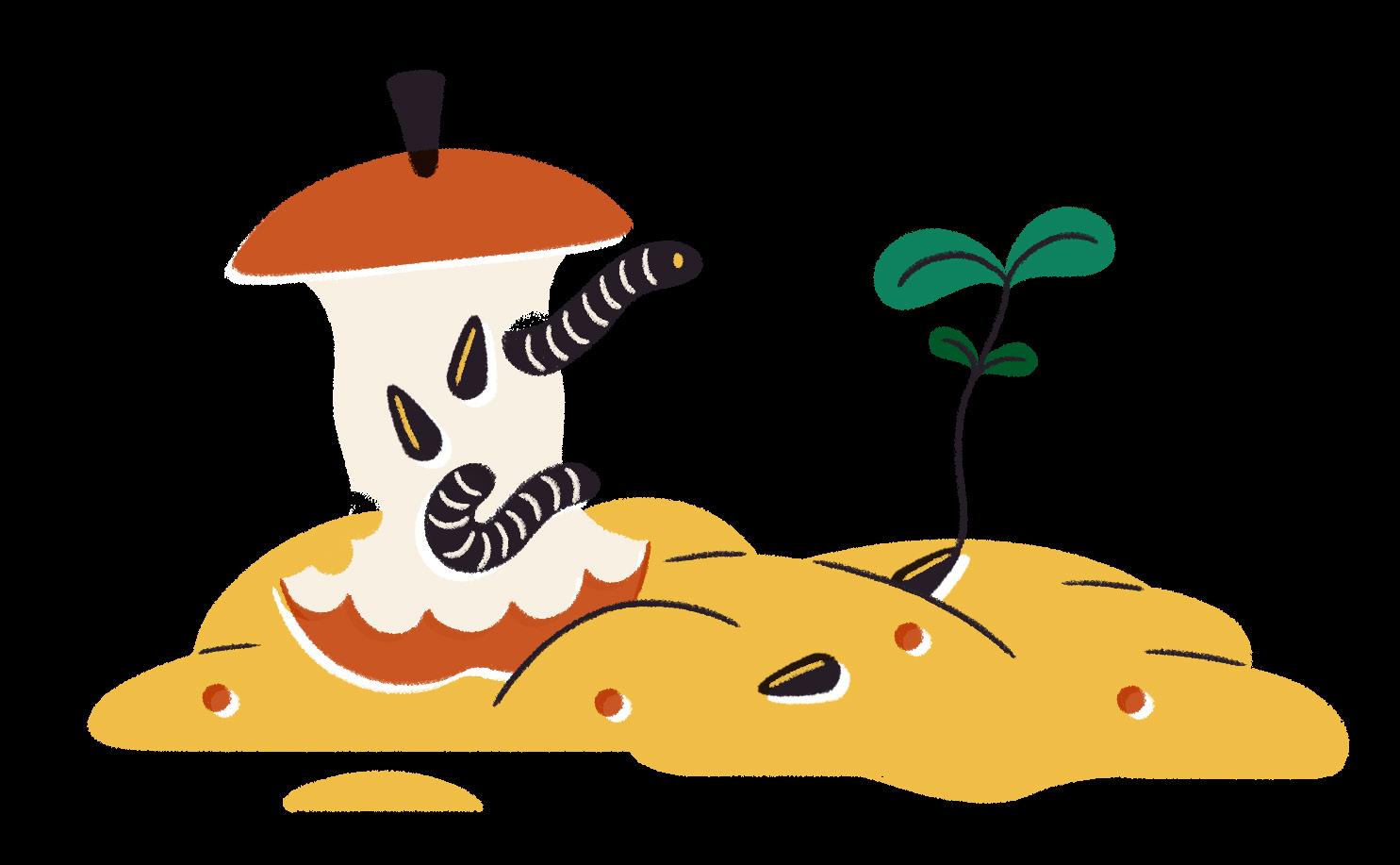
Inspire and be inspired to embrace new methods of teaching.
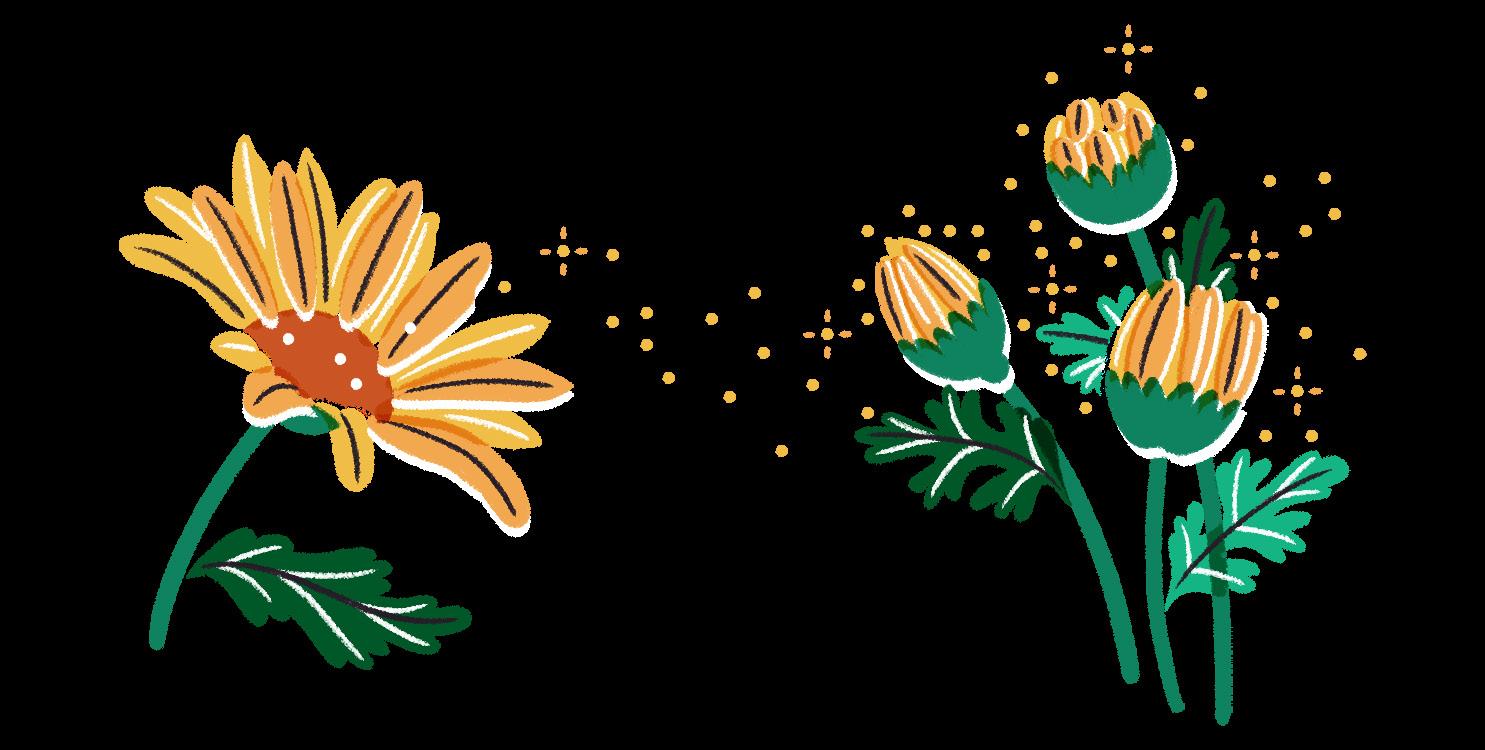
⚫ To accept something enthusiastically.
To meet evolving needs, we have embraced new methods of teaching and learning, particularly in the use of technology. While it is not always easy or successful at our first try, it helps to be part of a community that embraces that same desire to learn with and from each other.
Read The Answer is in the Room ↗
⚫ To make someone feel that they want and can do something.
Lead, Care, Inspire. The most gratifying aspect of our work is knowing that we inspire our students through their experience in our art classes. We craft learning experiences to help them discover their capabilities with confidence. Let this impact that we make continue to inspire us as art educators!

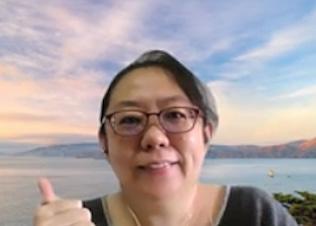
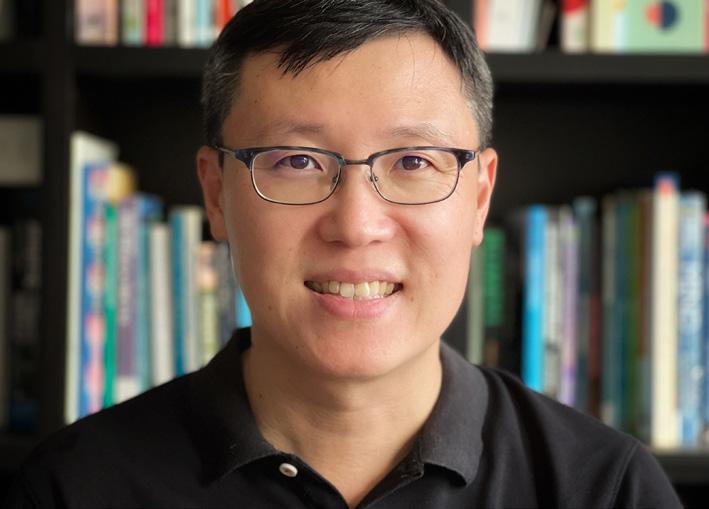

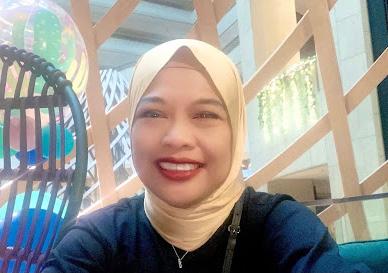
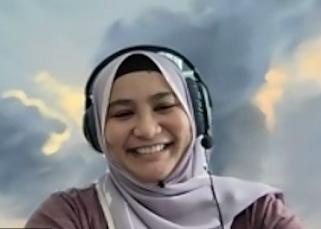
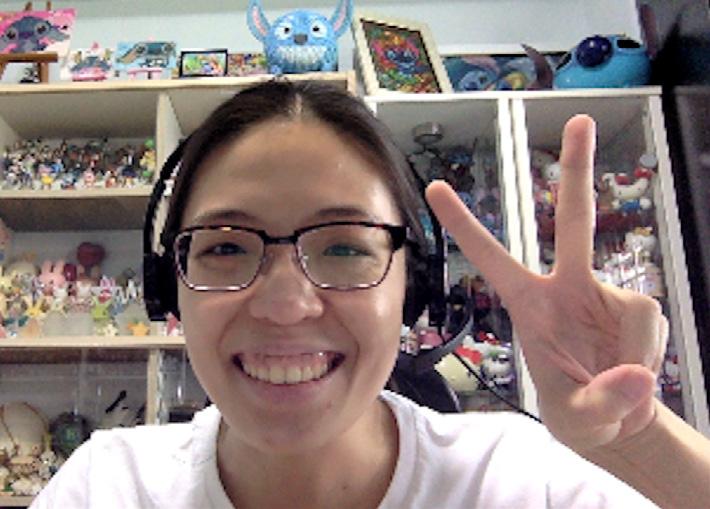
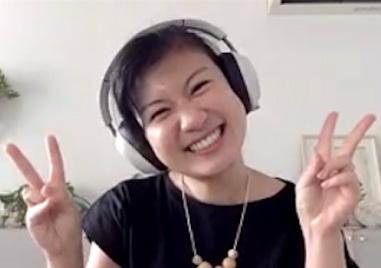
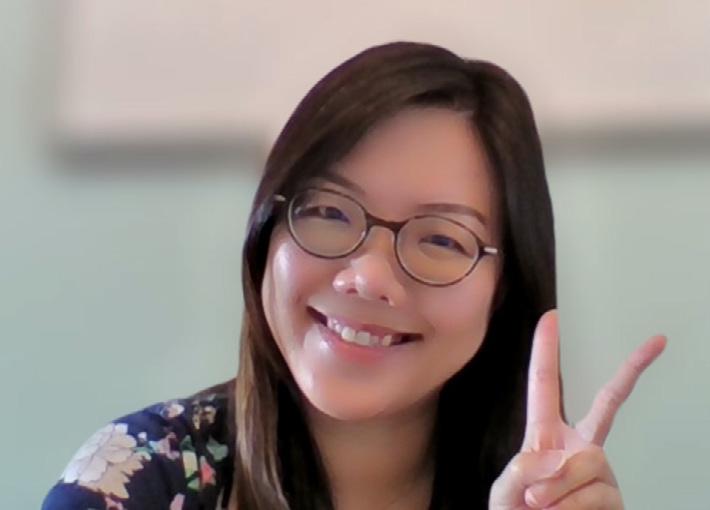
1 Ang Hwee Loo
Deputy Director (Art)
Ang_Hwee_Loo@moe.gov.sg ↗
2 Victoria Loy
Master Teacher (Art)
Victoria_Loy@moe.gov.sg ↗
3 Lim Kok Boon
Master Teacher (Art)
Lim_Kok_Boon@moe.gov.sg ↗
4 Chun Wee San
Master Teacher (Art)
Chun_Wee_San@moe.gov.sg ↗
5 Ira Wati Binte Sukaimi
Master Teacher (Art)
Ira_Wati_Sukaimi@moe.gov.sg ↗
6 Heryanty Mohd Yahaya
Senior Academy Officer (Art)
Heryanty_Mohamed_Yahaya@moe.gov.sg ↗
7 Chia Ying Academy Officer (Art)
Chia_Ying@moe.gov.sg ↗
8 Lorraine Lee Academy Officer (Art)
Lorraine_Lee@moe.gov.sg ↗
9 Lim Xiao Ting Academy Officer (Art)
Lim_Xiao_Ting@moe.gov.sg ↗
Editor
Lorraine Lee Academy Officer, STAR Co-editor Tay Jing Hui
Studio Assistant, STAR
Illustration & Design OPLA
